Brent Burns of the Sharks is lucky, charmed ... and good

This story appeared in the May 9, 2016 issue of SPORTS ILLUSTRATED. To subscribe, click here.
Get all of Alex Prewitt’s columns as soon as they’re published. Download the new Sports Illustrated app (iOS or Android) and personalize your experience by following your favorite teams and SI writers.
Imagine being a truck driver or an early-bird commuter cruising the open highways of Texas, Tennessee, Utah, Arizona, or Wherever, U.S.A. Now imagine seeing, out the passenger-side window, a road bicycle whizzing along the shoulder—sleek, custom-made and painted black. “Like the Batmobile,” its owner says. Churning forward, slurping gel packs, the rider looks only at the road ahead. Passersby, however, can’t help but gawk at this sweaty, tattooed, bushy-bearded cyclist—the fittest-looking drifter they’ve ever seen, all 6' 5" and 230 pounds of him squeezed into skintight shorts. Brent Burns can sense their curiosity. It’s tailed him for years. He knows what they are thinking.
What is this weirdo doing?
Brent Burns of the Sharks: NHL's most colorful character
Excellent question. And what’s with the unmarked Mercedes Sprinter van—30 feet long and also black—that’s honking its horn and stopping on the side of the road? Burns slows to a halt and dismounts, then hangs his bicycle on the back of his family’s vacation home. Before climbing behind the wheel and returning to the highway, he rinses off with the van’s built-in shower—a little garden hose attached to a water tank near the bike rack.
Last summer the Burns clan left their San Jose home on the morning of Aug. 3, three months after Brent had won a gold medal and best defenseman honors with Team Canada at the 2015 IIHF world championships and two months before he began his 12th NHL season and fifth with the Sharks. For 15 days Brent, his wife, Susan, and their two kids drove around North America, covering some 6,000 miles and stopping whenever roadside attractions caught their fancy. Really, the only routines came at dawn, when Burns awoke at the campsite and pedaled toward the nearest highway entrance ramp, and at night, when he worked out wherever there was room. He squatted with weighted vests on the porch of a Michigan family they had met at Disneyland. He practiced yoga in the garage of his wife’s family ranch in Texas. He sprinted up grassy hills near gas stations and trained in supermarket parking lots. “Unreal setup at the Walmart,” he says.
Burns knows how all of this comes across, fully aware of his reputation for “being a goofy donkey,” he says. It is, to an extent, grounded in reality. Burns’s personality is at odds with the typically vanilla sketch of hockey success, a large reason why he is so popular among Sharks diehards and general hockey fans alike. And the better he does on the ice—this season Burns earned his second straight All-Star selection and became just the fourth defenseman in the last 20 years to eclipse 25 goals—the brighter his personality seems to glow.
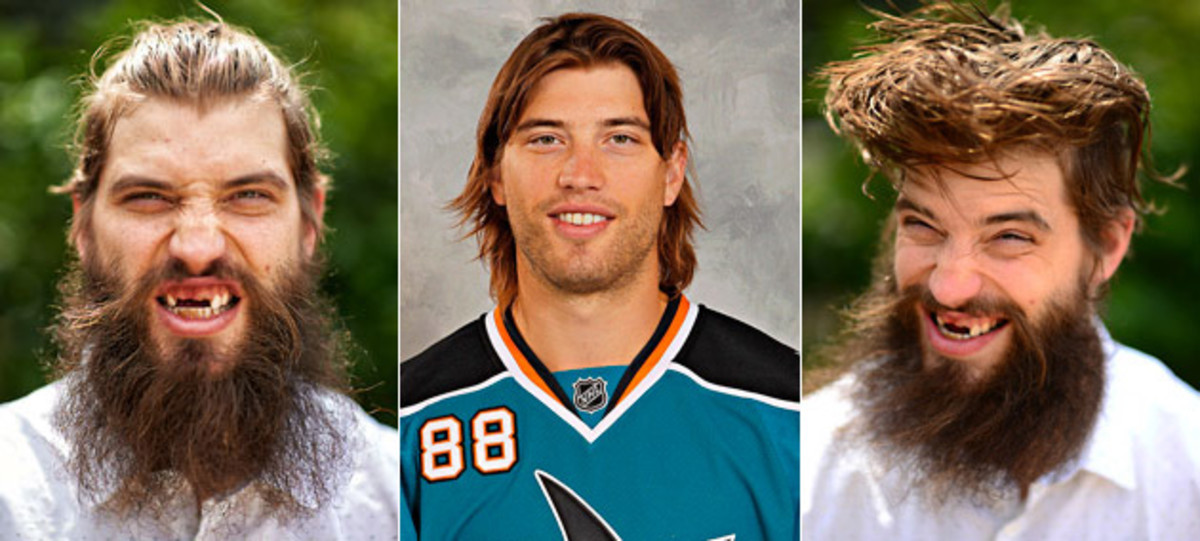
In 2002–03, his only season with the OHL’s Brampton Battalion, the scrawny teenager helped calm nerves by doing the Worm in the middle of the locker room; when a crew went to see Old School, Burns had everyone howling with laughter when he stepped to the front of the theater and belted out Eminem. “Waving his hands, fake-rapping, walking back and forth,” then teammate Adam Henrich recalls. “People were wondering, Who is this guy?” That June, when the Wild drafted him 20th overall, Burns approached the stage wearing a white suit. “He looked like the guys from Dumb and Dumber,” says his Brampton coach, Stan Butler. Before marrying Susan in ’09, he eschewed a traditional bachelor party and instead took friends to a military base, where they rose before dawn and learned to fire .50-caliber machine guns.
Several years ago Burns’s well-documented affinity for reptiles led him to befriend Brian Barczyk, a wildlife expert based in Detroit who appears on Discovery Channel’s Venom Hunters. The second time they met, Burns was in town for a game against the Red Wings and hustled straight to Barczyk’s 15,000-square-foot facility right off the plane. Still dressed in his suit, Burns quickly found the building’s humidity bothersome. “In the middle of a sentence he just takes his dress pants off, around my wife and everybody,” Barczyk says. “I’m like, ‘What the hell are you doing, man? You’re half-naked in my building.’ And he’s like, ‘Man, it’s hot in here.’” And so it was that Burns spent the next hour looking at ball pythons and bearded dragons in a jacket, tie and boxer shorts.
Says Ryan Bowness, an ex-teammate in Brampton who’s now an executive with Winnipeg, “You just laugh and shake your head and say, ‘That’s Burnsie.’”
TOP 25 NHL DEFENSEMEN OF ALL TIME
Top 25 NHL Defensemen of All Time
25. Shea Weber
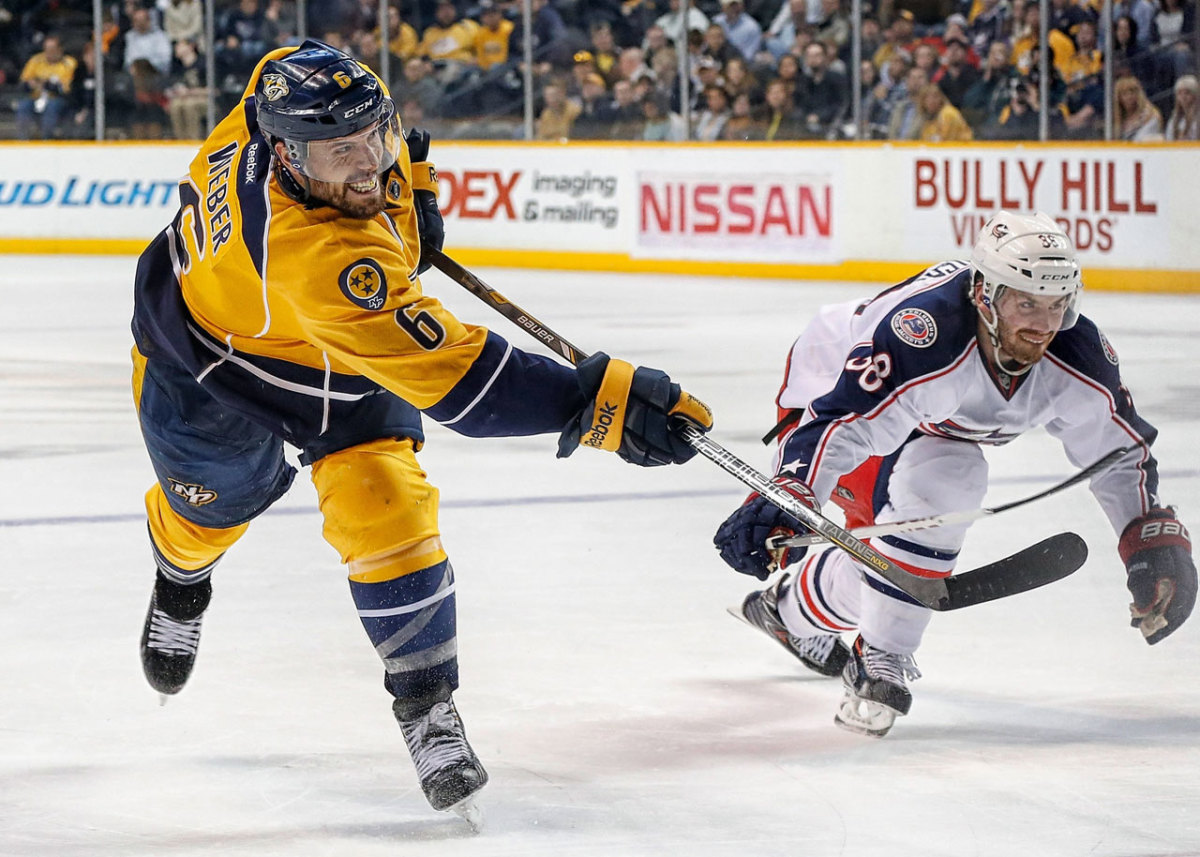
Weber is a complete defenseman. At 6’-4”, 235 pounds, he packs a mean streak and a cannonball shot. Though he’s still only 29, he already has six seasons of at least 16 goals on his resume and an Olympic gold medal he won while playing for Canada at the 2010 Games. He should win his first Norris Trophy before long, but his legacy will ride on whether he can win the Stanley Cup.
24. Borje Salming
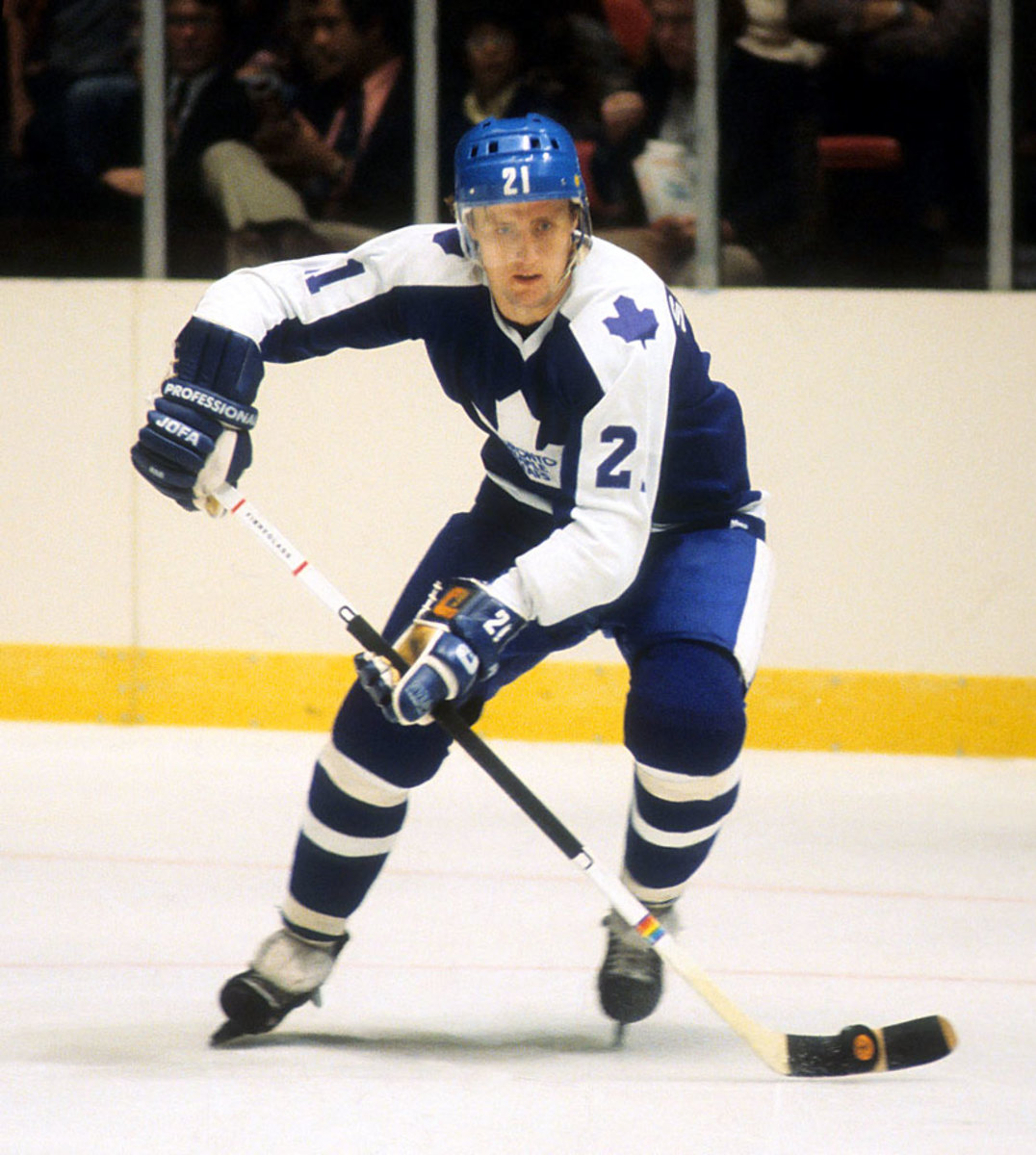
The longtime Maple Leaf came over to the NHL during the Broad Street Bully days of the mid-70s when the league’s ruffians ate Swedish players for lunch. Salming took some brutal hackings and beatings, but he also won respect for playing through them and becoming a fine support player for the likes of Darryl Sittler and Lanny McDonald in Toronto. Salming earned five Second-Team All-Star selections and was a First-Team pick in 1977. He finished his career with 787 points and +175 rating in 1,148 games.
23. Rob Blake
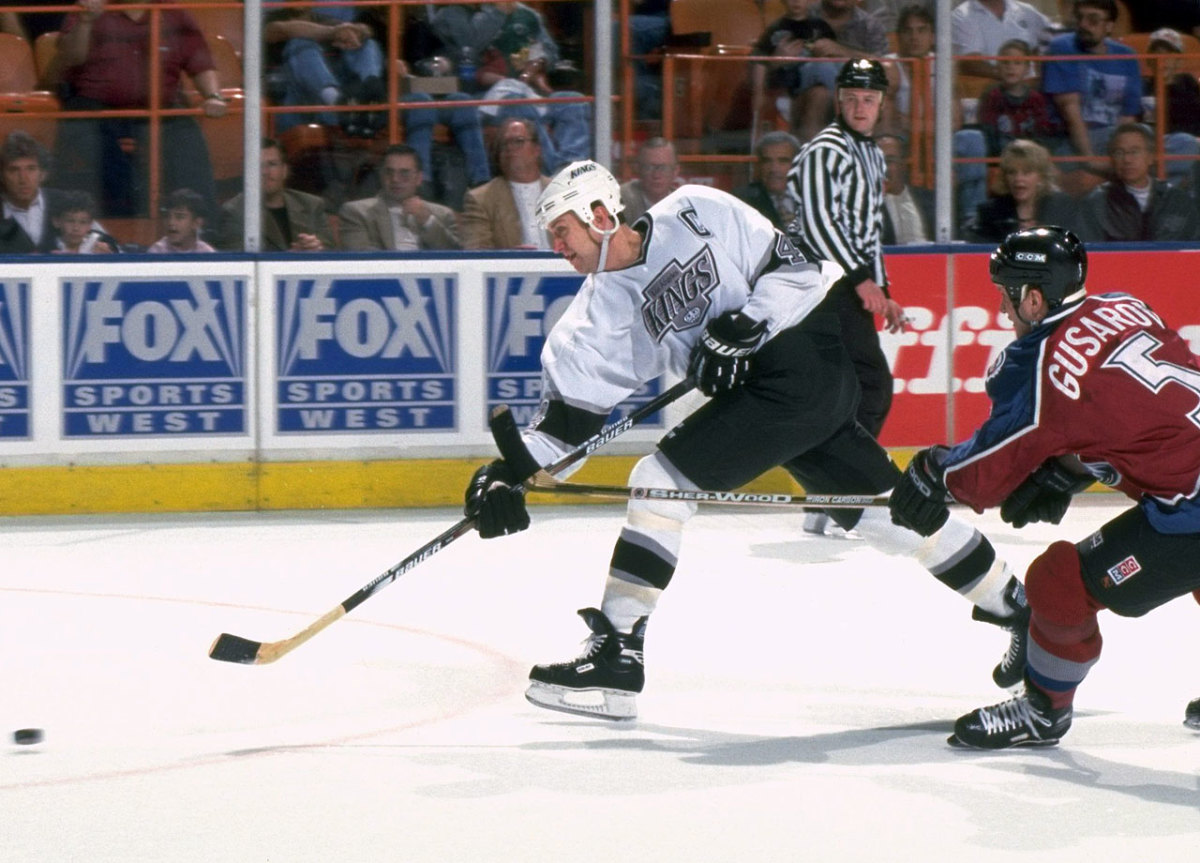
The classic two-way defenseman was a stiff checker and steady puck mover who scored double figures in goals 13 times during a career that spanned 1,270 games and produced a Stanley Cup in Colorado and gold medals at the World Championships and Olympic Games while representing Canada. Though he never posted a 70-point season, Blake still amassed 777 points, a testament to his consistent production throughout his career. He also won the Norris Trophy in 1998 as an L.A. King.
22. Scott Niedermayer
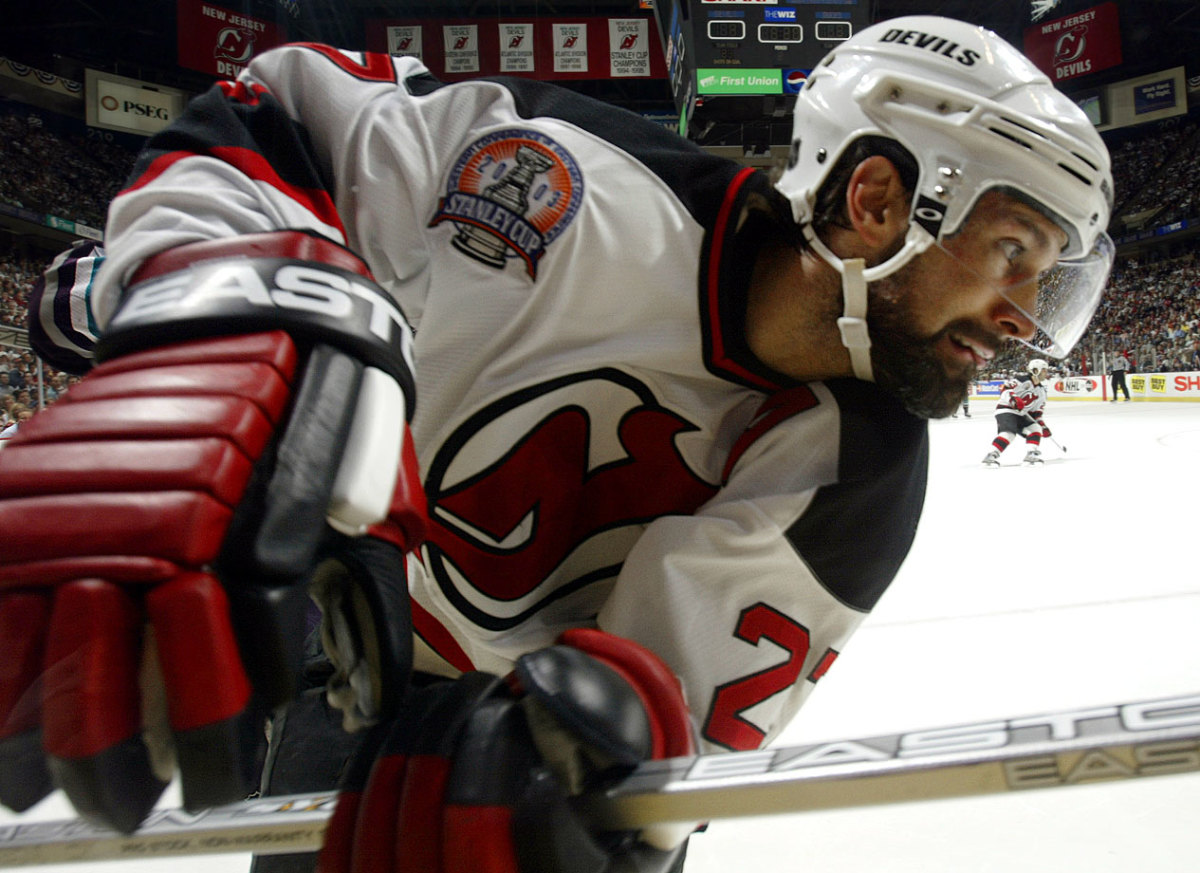
The fleet Niedermayer was a remarkably effective offensive blueliner (35 or more points in a season nine times) during an age of clutch-and-grab on a defense-minded team. Despite the Devils’ restrictive system, he was able to shine, winning the Norris Trophy in 2004 and three Stanley Cups (1995, 2000, ’03) before adding another championship with his brother, Rob, with Anaheim while earning the Conn Smythe Trophy in 2007. A winner at every level of hockey at which he played, Niedermayer's mantel also holds gold medals from the Olympics (2002, '10), World Championship ('04), World Cup ('04), and World Junior Championship ('91).
21. Zdeno Chara
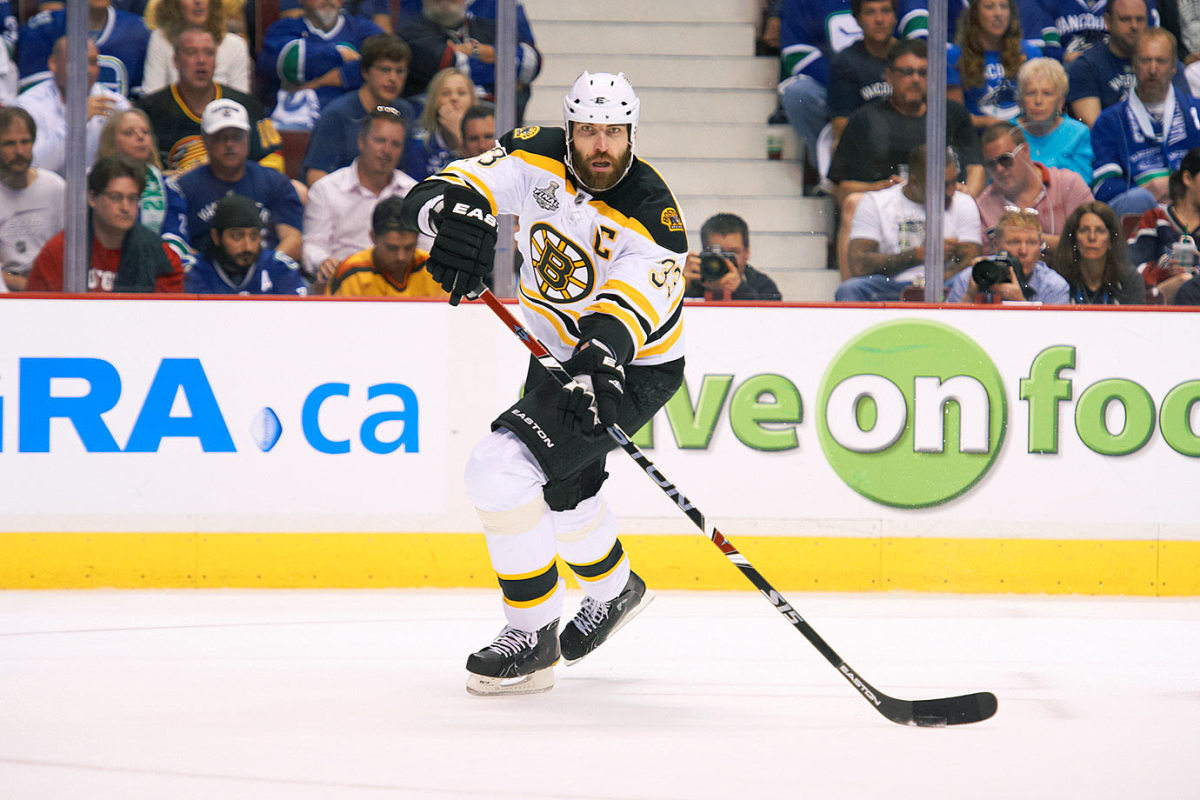
At 6’9”, Big Z is the tallest player ever to play in NHL and yet has remarkable dexterity and puck control for someone who towers over the league. Even at 38, the 17-year NHL veteran is still a scary foe to play against. Though he will always be remembered for a scary turnbuckle check against Montreal's Max Pacioretty, Chara is actually fairly controlled for a physical force he has been throughout his career, even with more than 1,600 penalty minutes in over 1,100 games played. He helped end Boston’s Stanley Cup draught with his brilliant play in the 2011 postseason.
20. Mark Howe
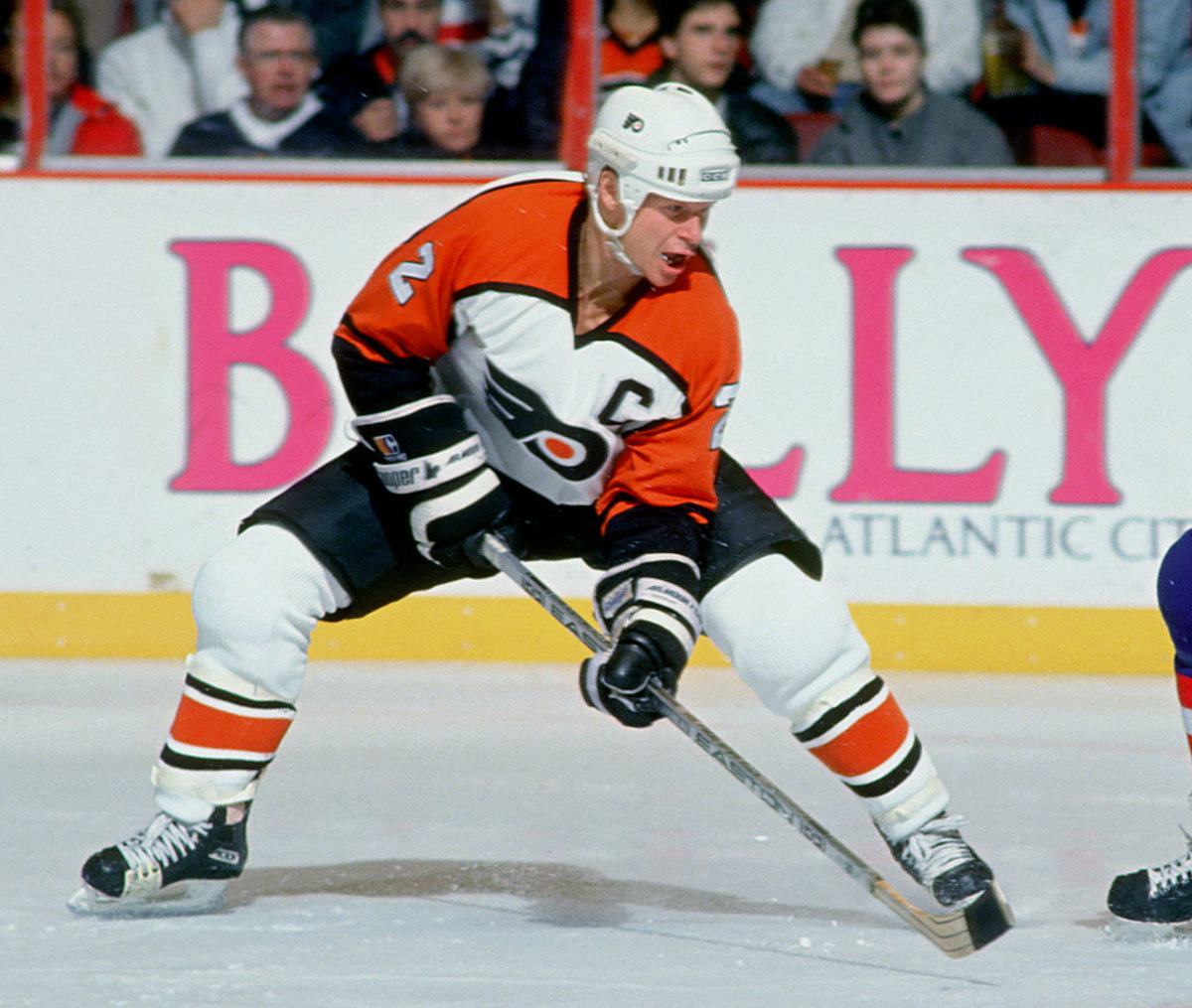
Gordie’s son didn’t have his dad’s mean streak but he earned enshrinement in the Hall of Fame as a defensive stalwart. In the 1980s, Howe played an astounding 30 straight games without being on the ice for an even-strength goal-against. The three-time Norris Trophy finalist was also a fine candidate for the Lady Byng, an unusual distinction for a defenseman, or the Masterton Trophy, having survived a gruesome injury in which the plate that used to keep the goal net firmly on the ice got stuck five inches into his hip.
19. Rod Langway
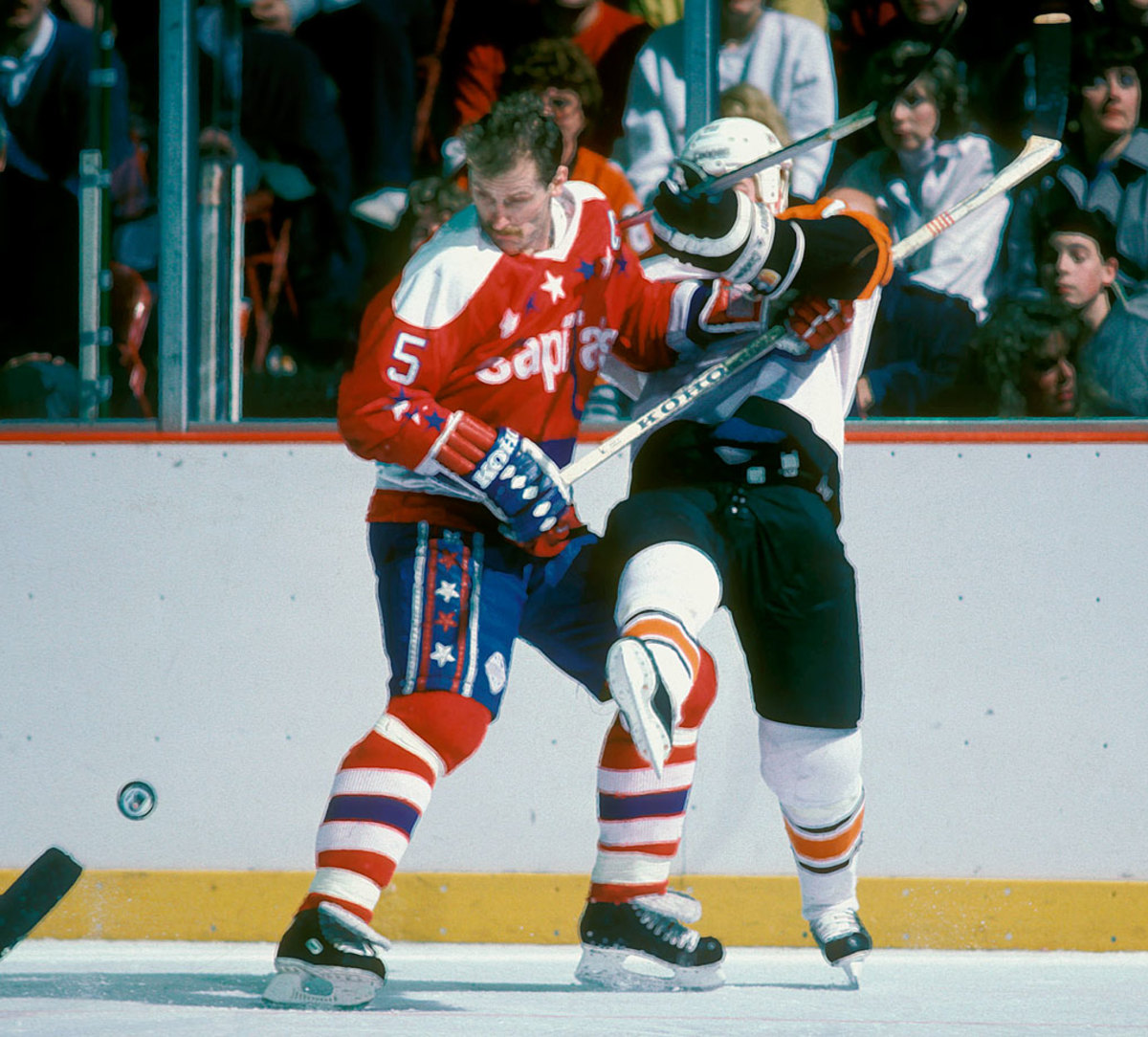
Langway made the Hall of Fame purely on his defensive skills. The two-time Norris winner was never especially fast, but he always seemed to cover a lot of ice because of his tenacious play along the boards and relentless pursuit of pucks and opposing forwards. He played the game with an attitude and was effective at keeping his crease clear. Langway won the Cup with Montreal in 1979 and later became a force with Washington for 11 seasons.
18. Larry Murphy
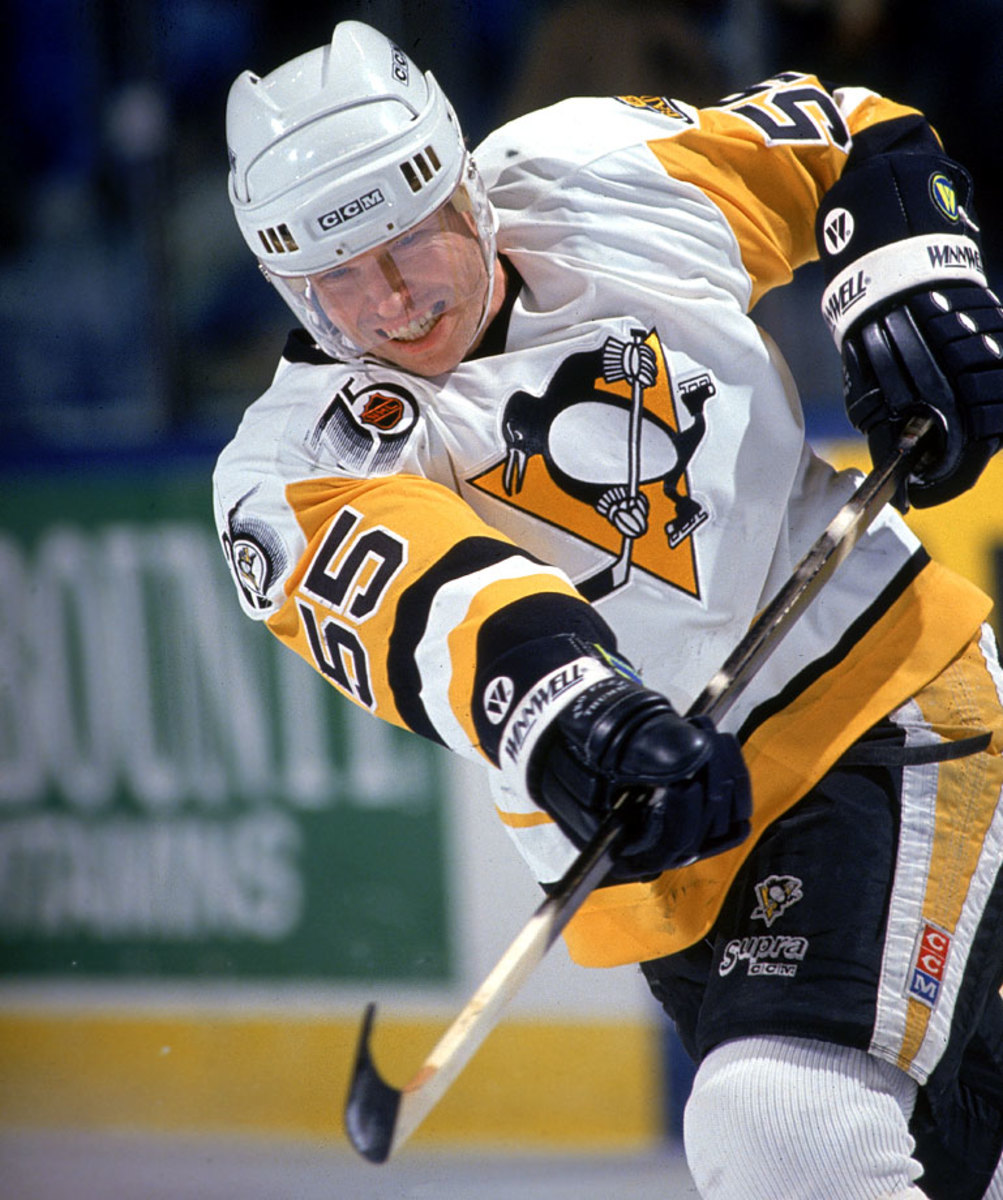
The Rodney Dangerfield of backliners was rarely fully appreciated for how durable (1,615 games), consistent (1,216 points) and successful (215 playoff games) he was. Murphy became an offensive star in Washington and won a pair of Cups with both Pittsburgh and Detroit. As a Red Wing, he was a fine complement to Nick Lidstrom as a team player.
17. Brad Park
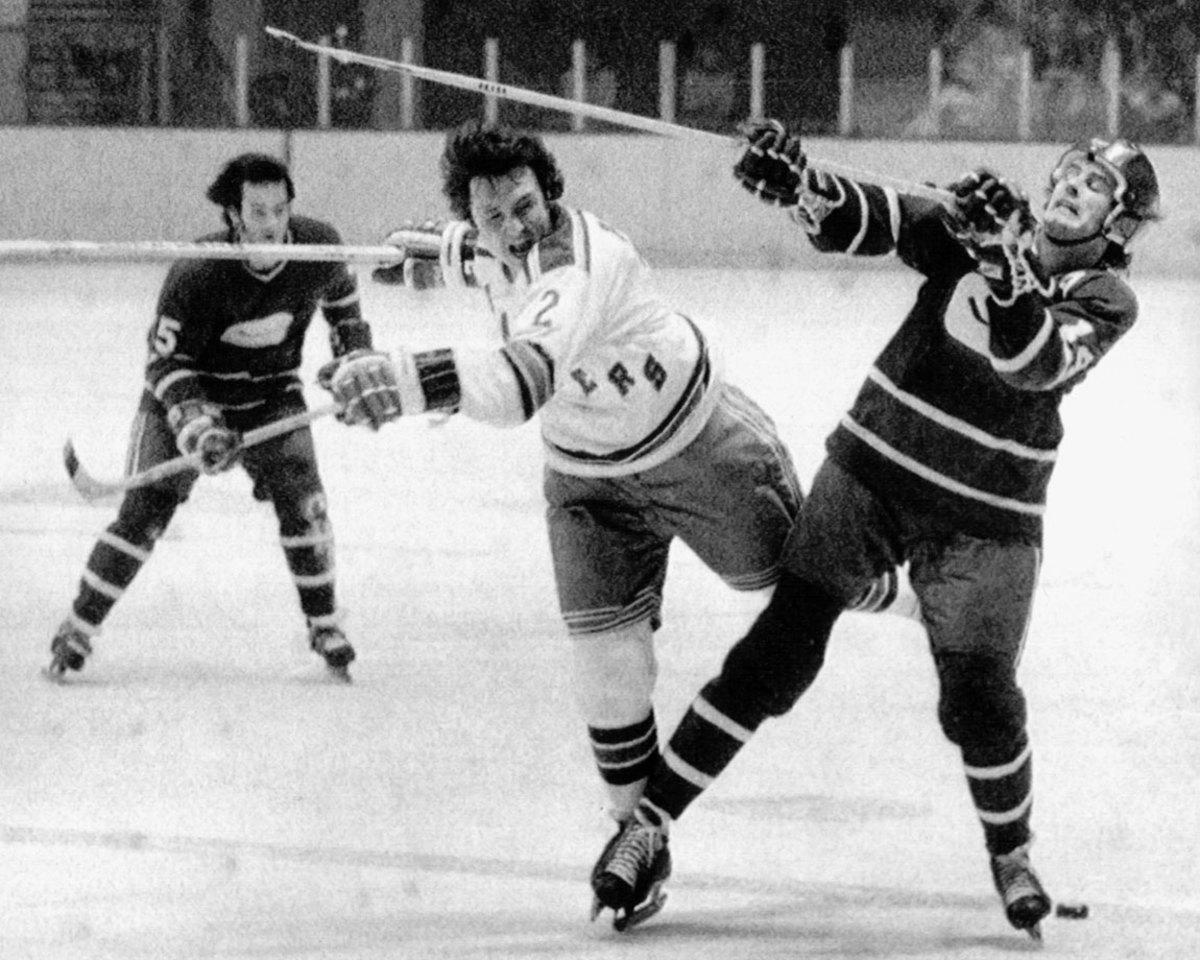
The greatest defenseman of his generation who wasn’t named Orr, the physical, scrappy Park was an NHL First Team All-Star five times, a Second Teamer twice, and runner-up to Orr for the Norris on six occasions. Though he played on some outstanding teams with the Rangers and Bruins, Park never won the Stanley Cup. He did appear in 161 career playoff games and his teams never missed the postseason during his 18-year NHL career. He also topped the 20-goal mark three times and scored at least 10 goals 12 times.
16. Al MacInnis
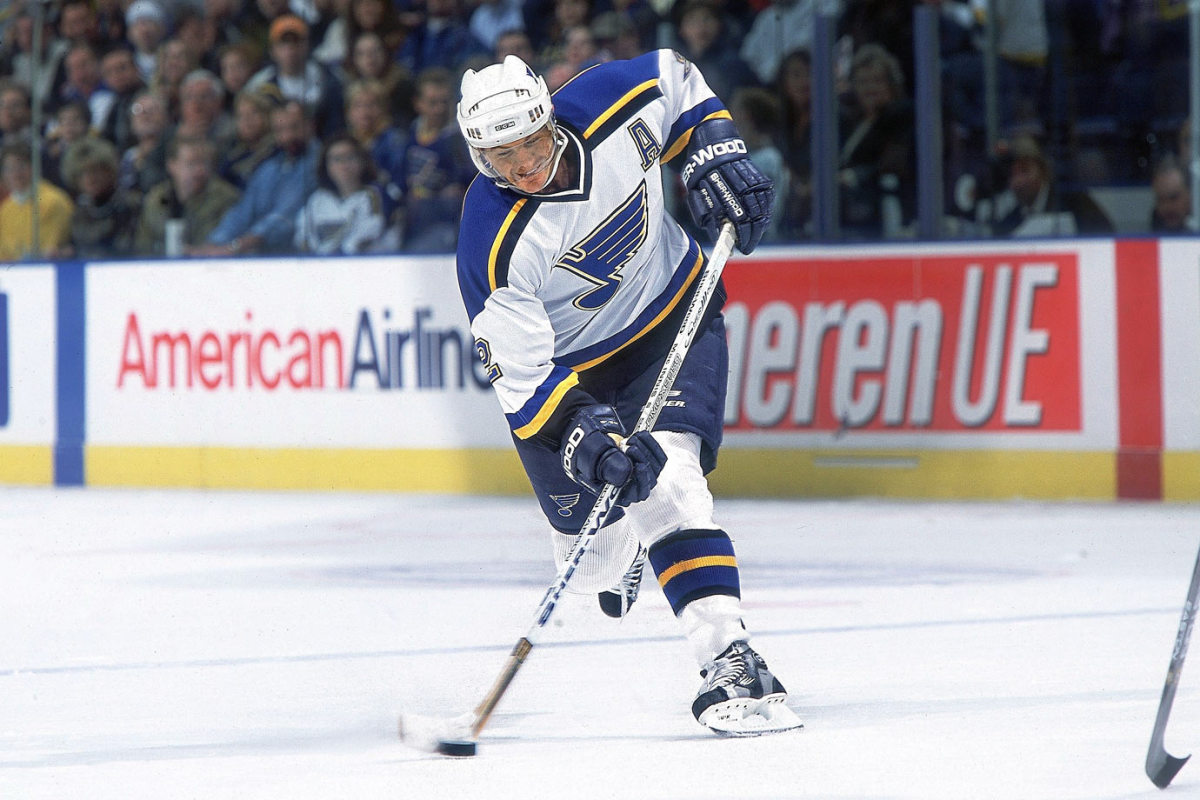
Skilled at joining rushes and keeping pucks out of traffic areas in front of his net, MacInnis may have had the most devastating shot in hockey history. He was also able to keep his blasts low and control them so his teammates could tip them past goalies. His shot grew into legend after a game in 1984 when he fired a puck that split goalie Mike Liut’s mask into two pieces before bouncing into the net. A Cup winner in 1989 with Calgary, he finished his career with 1,274 career points.
15. Marcel Pronovost
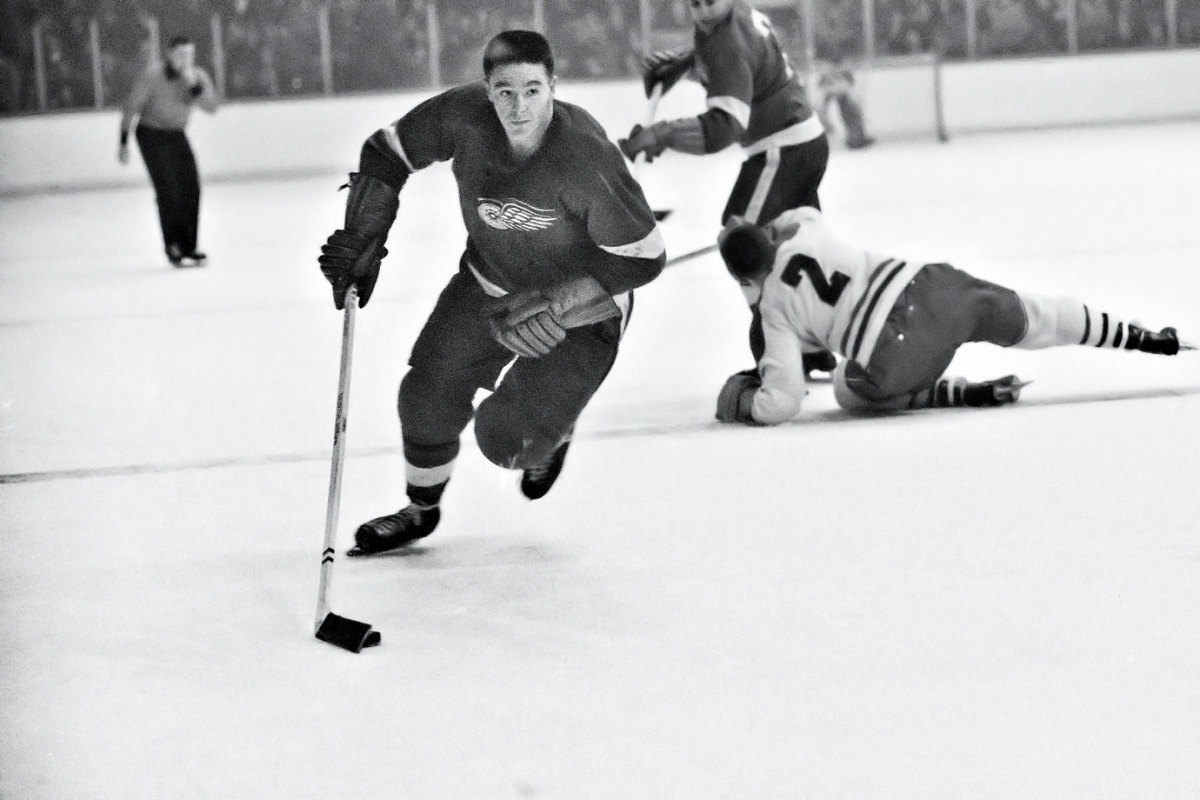
Pronovost played in 11 All-Star Games and won five Cups, including four with Detroit and one with Toronto. A former forward, he played both positions early in his NHL career. During Toronto’s Cup run in 1967, the steady Pronovost was on the ice for only one even-strength goal-against during the entire postseason.
14. Paul Coffey
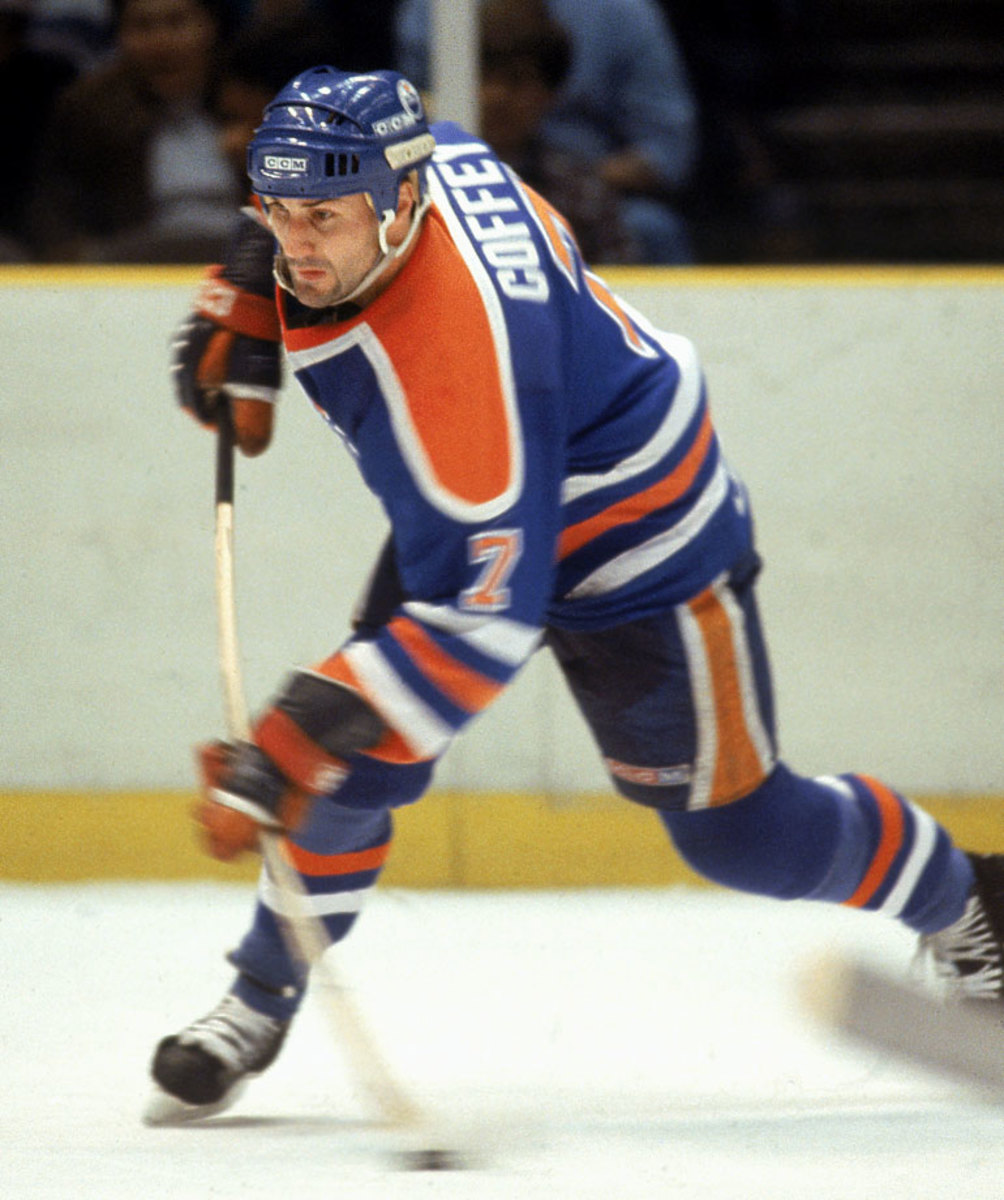
No defenseman since Bobby Orr has been as gifted. On the run-and-gun Oilers, the smooth-skating Coffey was deadly on the power play or the rush as a fourth man, a stealth trailer who feasted on chances produced by the likes of Wayne Gretzky, Mark Messier, Jari Kurri and Glenn Anderson. After winning three Cups with Edmonton, where he scored 48 goals in 1985-86, he added another with the Penguins in 1991, making him one of the fortunate few to ride shotgun with both Gretzky and Mario Lemieux in their heydays.
13. Scott Stevens
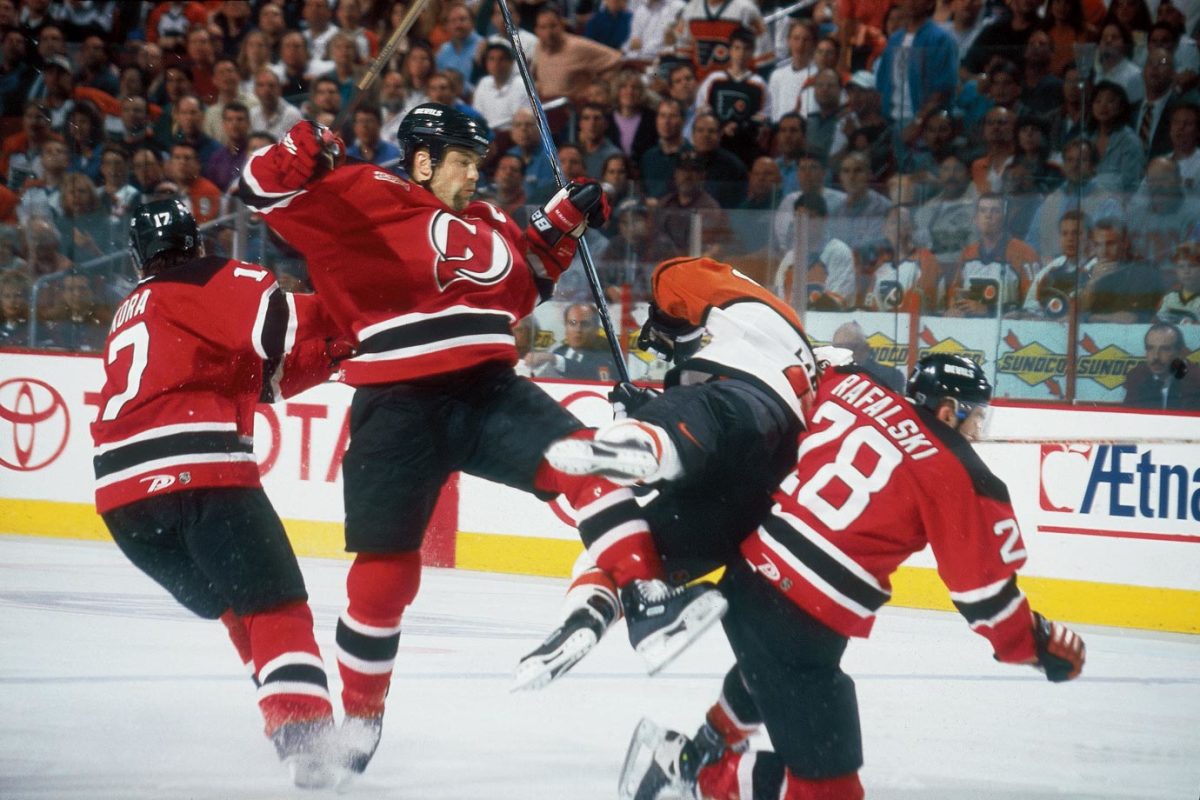
Arguably the most devastating checker of all time, Stevens knocked players senseless with hits that would get him suspended today. His most notorious was the one on the much larger Eric Lindros of the Flyers in the 2000 playoffs. A plus player in each of his 22 seasons, Stevens was more than adequate offensively (908 points) and he captained the Devils to the Cup in 1995, 2000 and ‘03.
12. Tim Horton
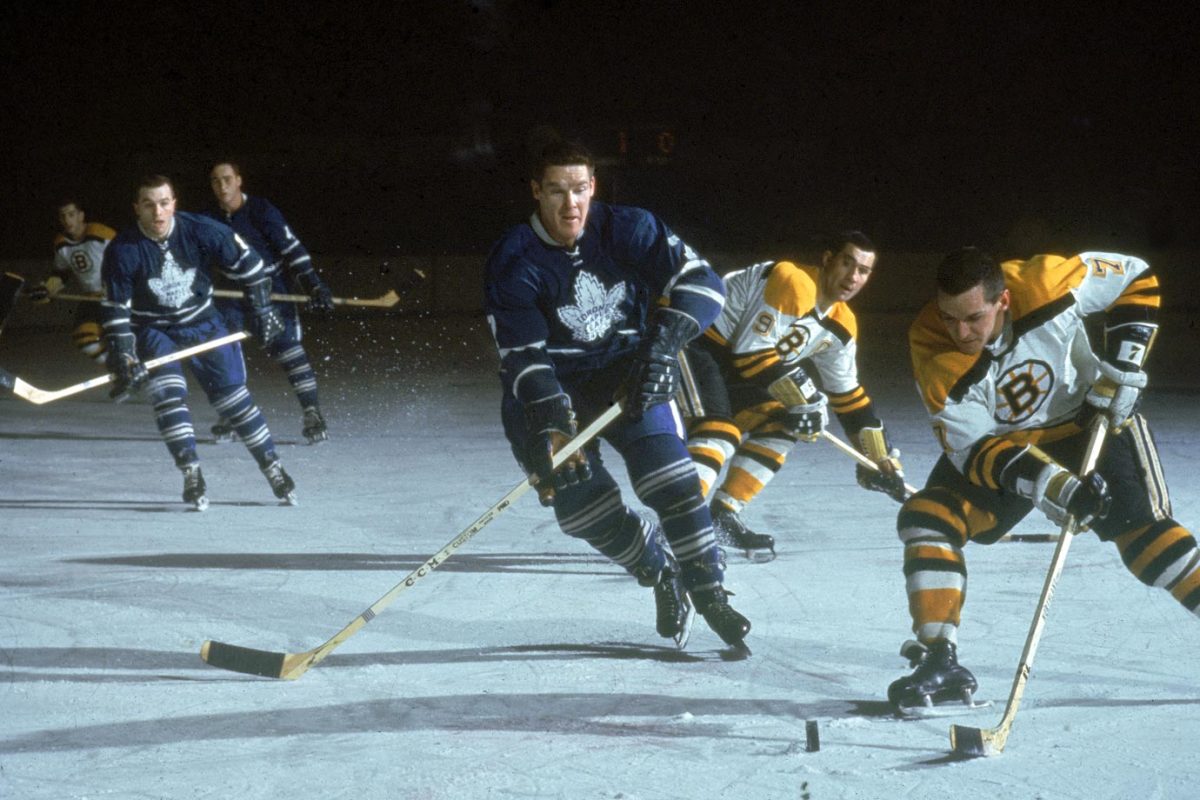
Now known for the donut chain that bears his name, Horton was one of the game’s steadiest, strongest defensemen. He held the NHL’s ironman mark for blueliners with 486 consecutive games played until Karlis Skrastins broke it in 2007, despite suffering a broken leg and jaw after being checked by Ranger Bill Gadsby in 1955. Horton played in 1,446 games, capturing four Stanley Cups with Toronto before playing with the Rangers, Penguins and Sabres.
11. Chris Pronger
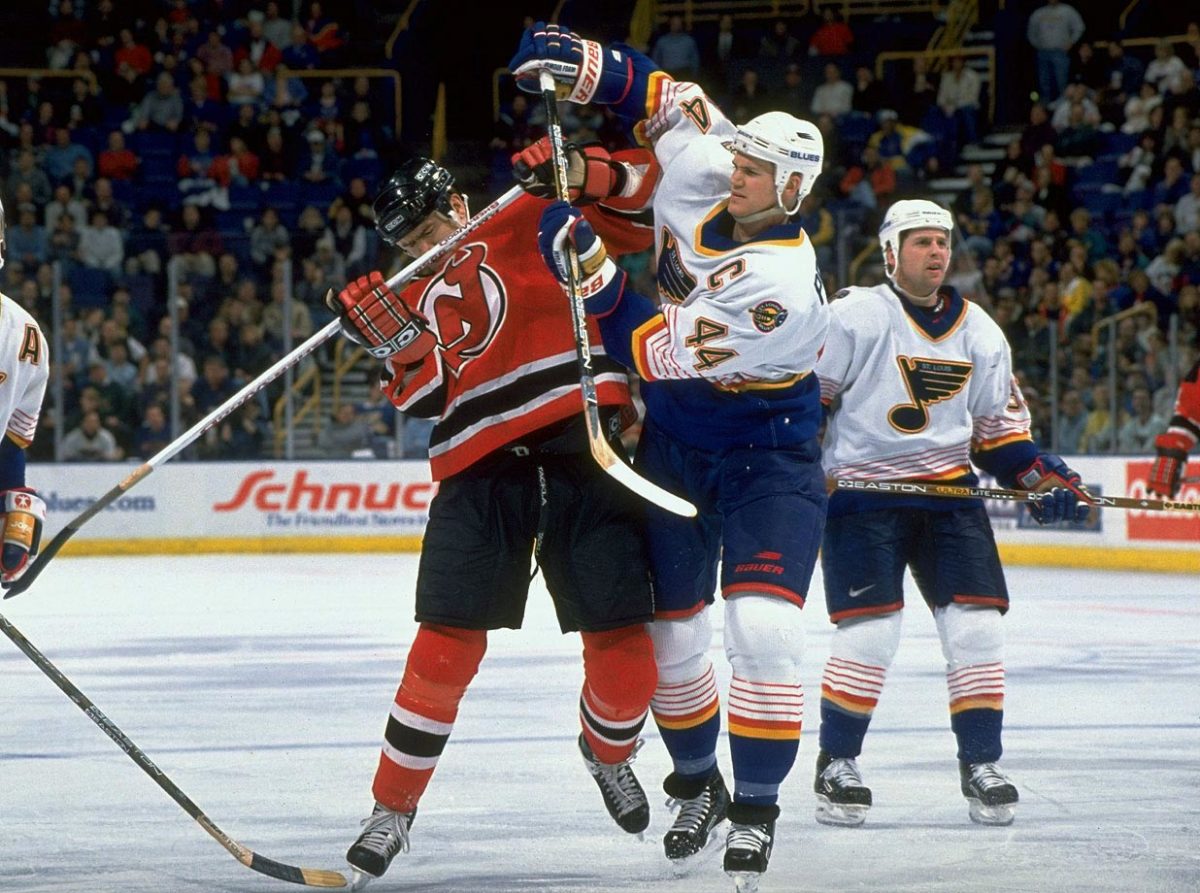
One of the meanest, most feared defensemen of his time, Pronger earned eight suspensions for excessive play, but he also had superb vision and anticipation that made him a deft outlet passer and defender who could afford to guess and take chances while playing aggressively. He reached the Cup finals with three different teams, winning the championship with Anaheim in 2007, and was inducted in the Hall of Fame in 2015.
10. Brian Leetch
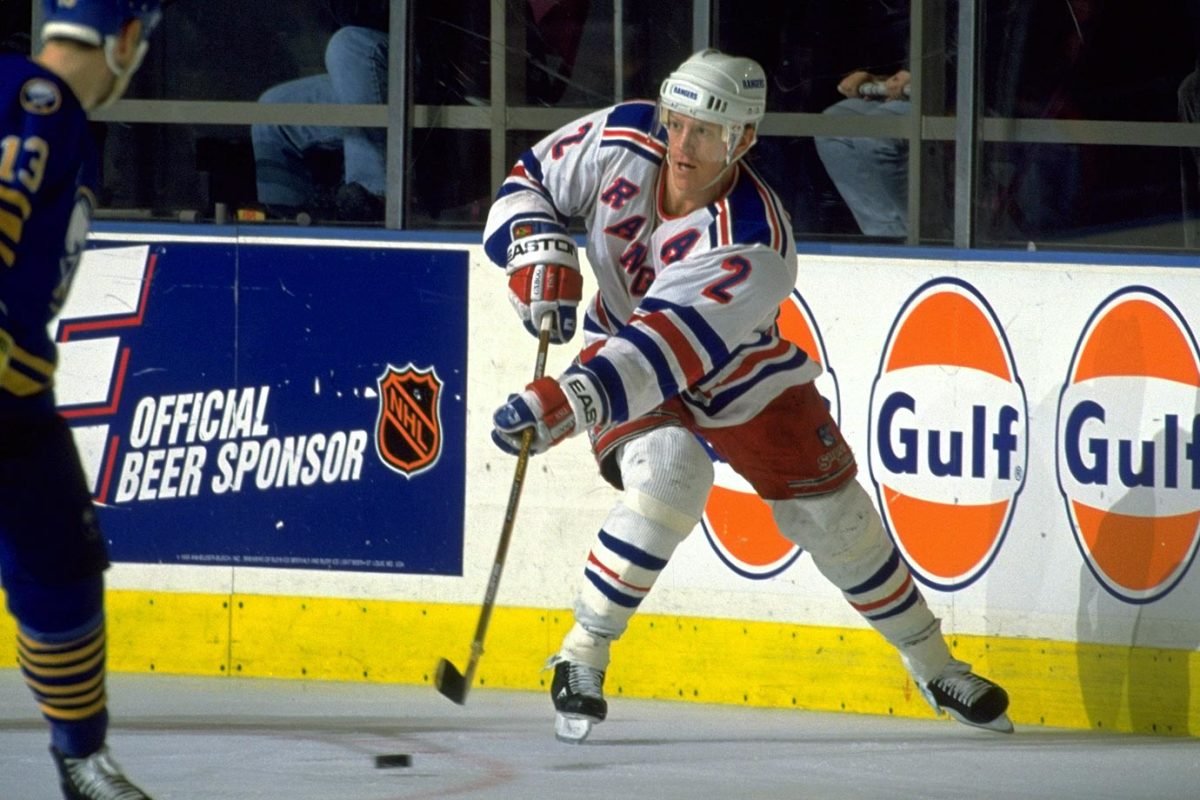
Perhaps the finest U.S.-born defenseman of all time, Leetch was a grab bag of skills. Though he lacked Paul Coffey’s speed and Al MacInnis’ shot, he had a knack for keeping pucks in at the point, making plays in traffic, riding bigger players off the puck in his own zone, and creating scoring chances out of broken plays. Leetch always saved his best play for pressure games, winning the Conn Smythe Trophy as playoff MVP in 1994 when the Rangers ended their 54-year Cup drought.
9. Pierre Pilote
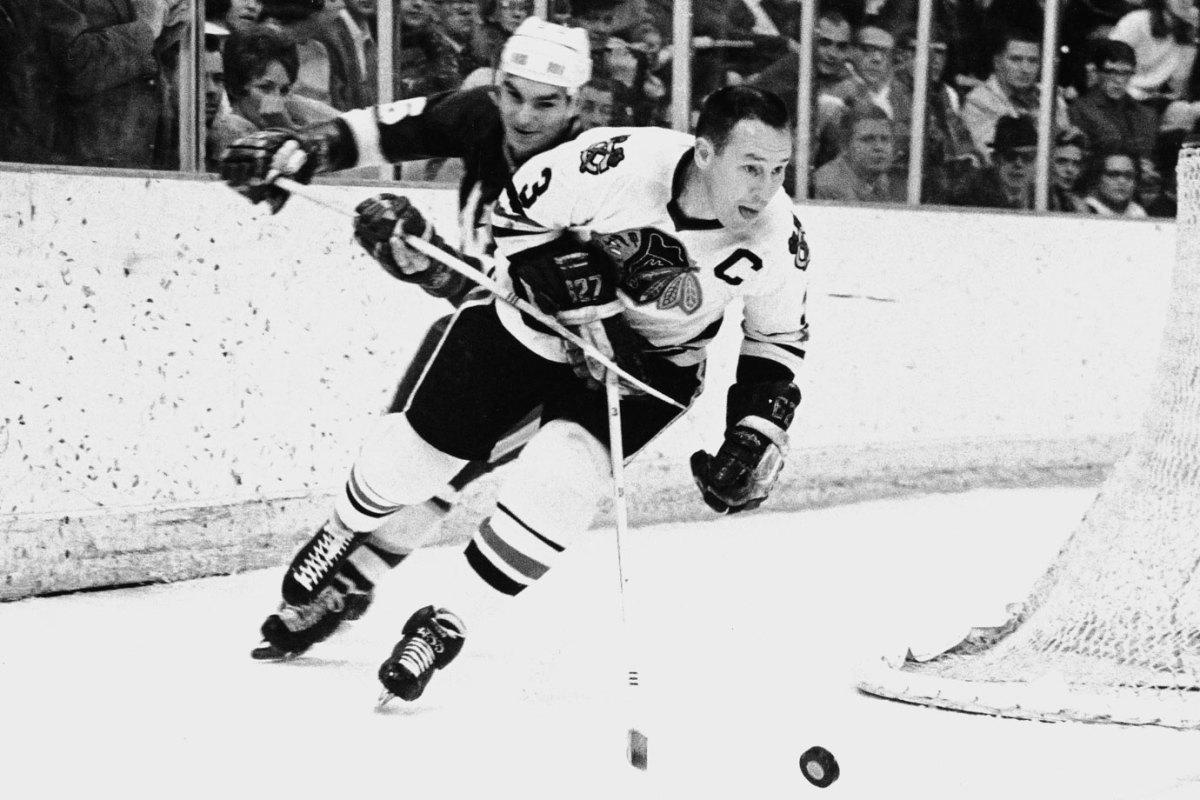
Pilote joined the Chicago in 1955, won the Stanley Cup in 1961 and became the Blackhawks’ captain the next season. Teamed with Moose Vasko for most of his career as one of the game’s top defensive tandems, he won three Norris Trophies and was runner-up three times. He had the offensive skills to be a fixture on the power play, scoring 14 goals in 1964-65 when Chicago again reached the Cup finals, and a nasty side with his stick, twice amassing 160 penalty minutes in a season.
8. Chris Chelios
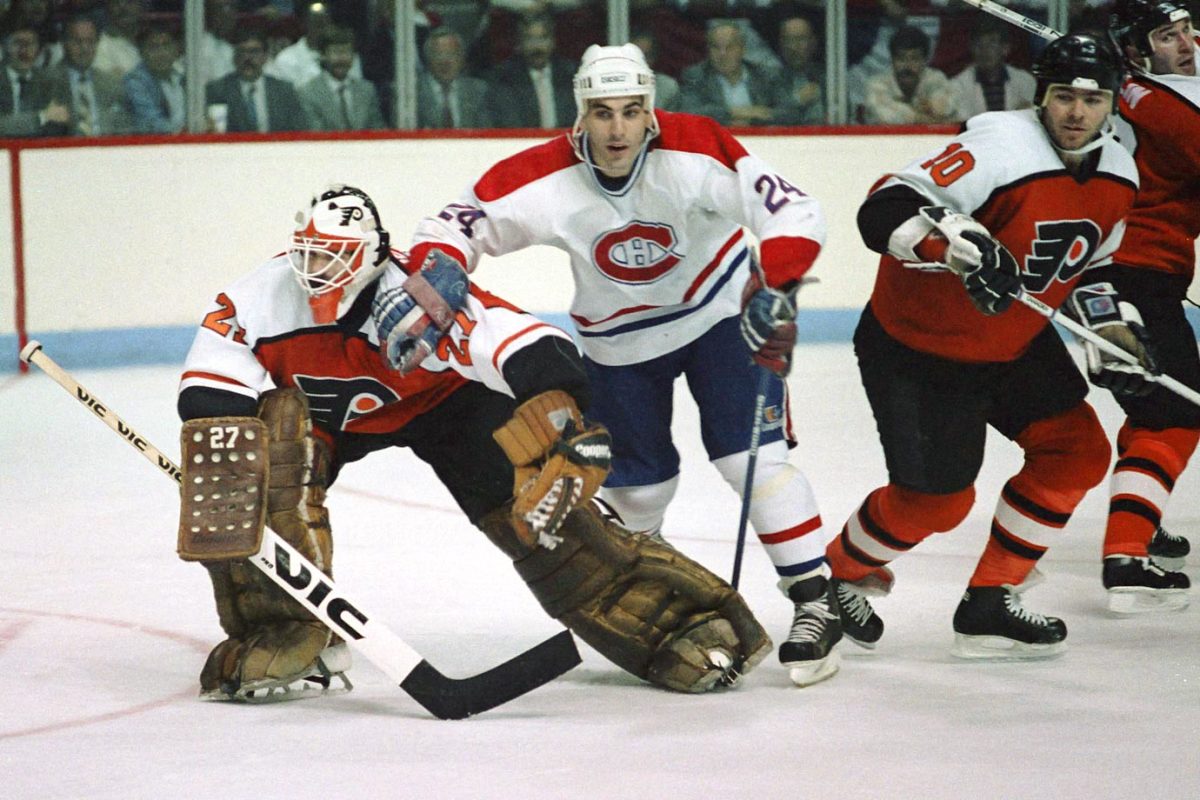
No one was more ill tempered or inspired more animosity in opponents. His 2,891 penalty minutes, second among NHL blueliners, were well earned. Flyers’ goalie Ron Hextall once compromised his team’s comeback in the closing minutes of a playoff game by chasing Chelios and pounding away. A three-time Norris Trophy winner, Cheli played to age 48 and his 1,651 games rank fifth all-time and first among defenseman.
7. Red Kelly
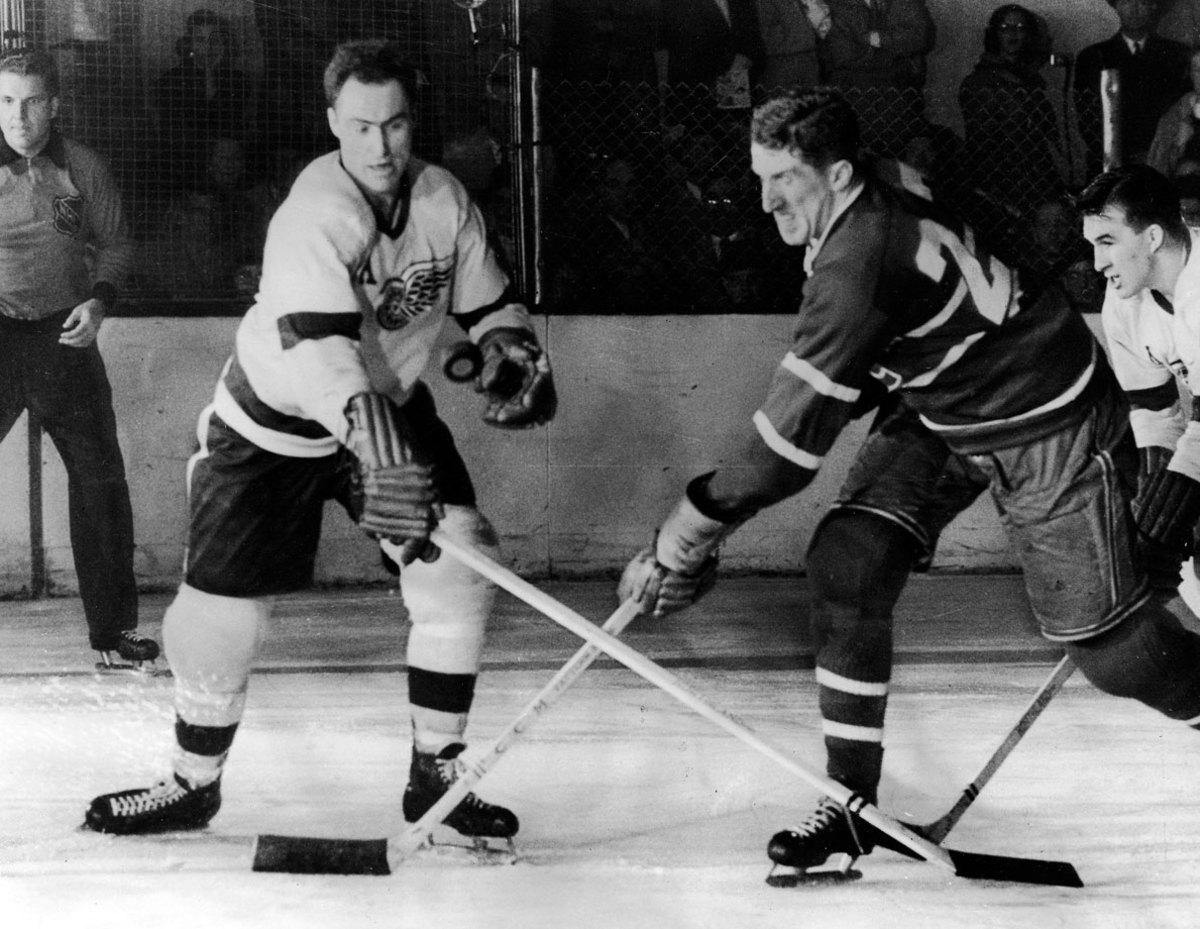
Kelly won eight Stanley Cups with Detroit and Toronto, more than any player who never played for Montreal, and the Norris Trophy in 1954, the year it was first awarded. When foot and leg injuries caught up to him, he actually moved up to play forward so he did not have to skate backwards as often, and he spent the last seven seasons of his 20-year career up front. When he retired, his 1,316 games played stood second only to Gordie Howe and ranked first among defensemen.
6. Larry Robinson
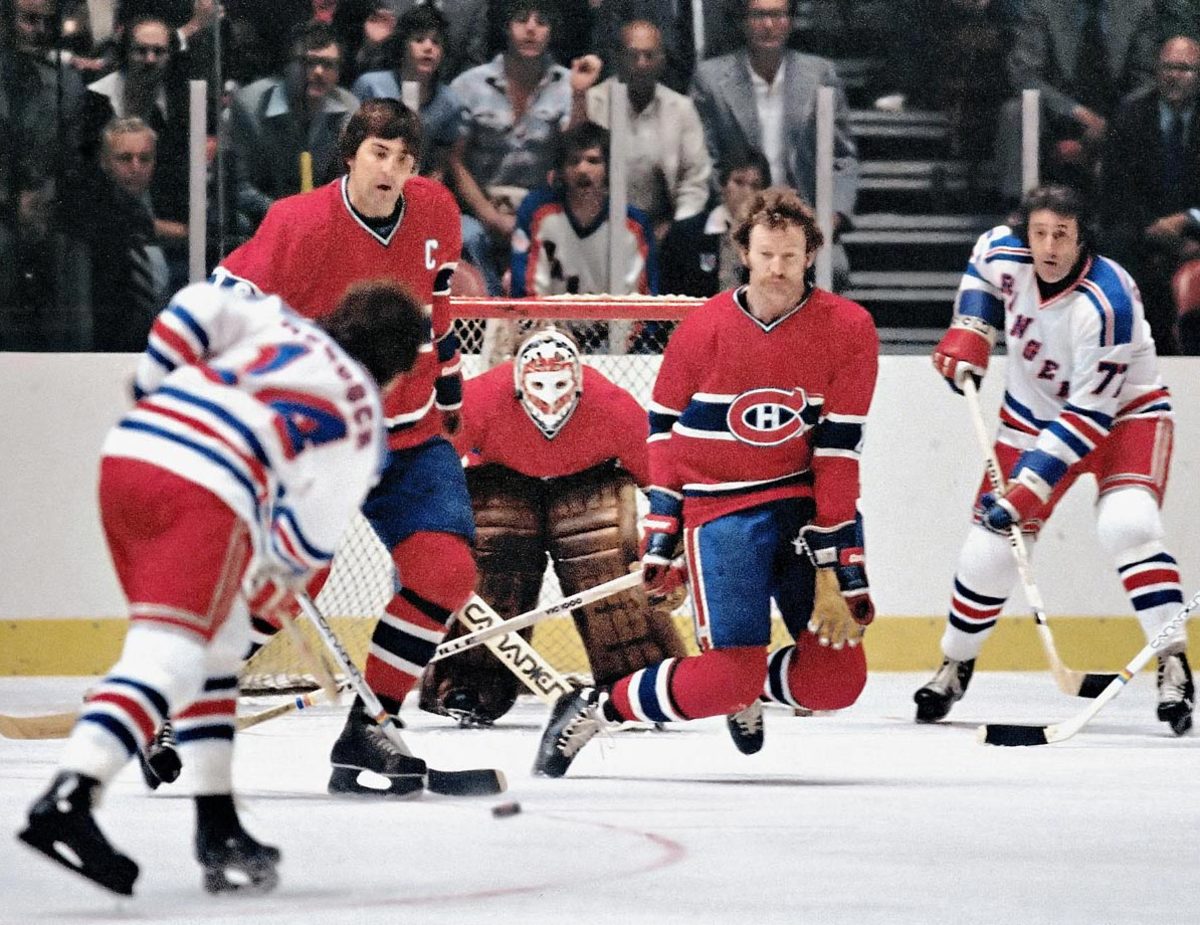
The 6’-4” Robinson was the ace of a Montreal defense corps that anchored four straight Stanley Cup teams (1976-79). He combined the offensive skills of backline partner Guy Lapointe and the defensive stinginess of Serge Savard, and his long reach made him tough to elude. He finished his career with the highest plus-minus rating (+730) in NHL history and later won his seventh Cup as coach of the Devils in 2000.
5. Denis Potvin
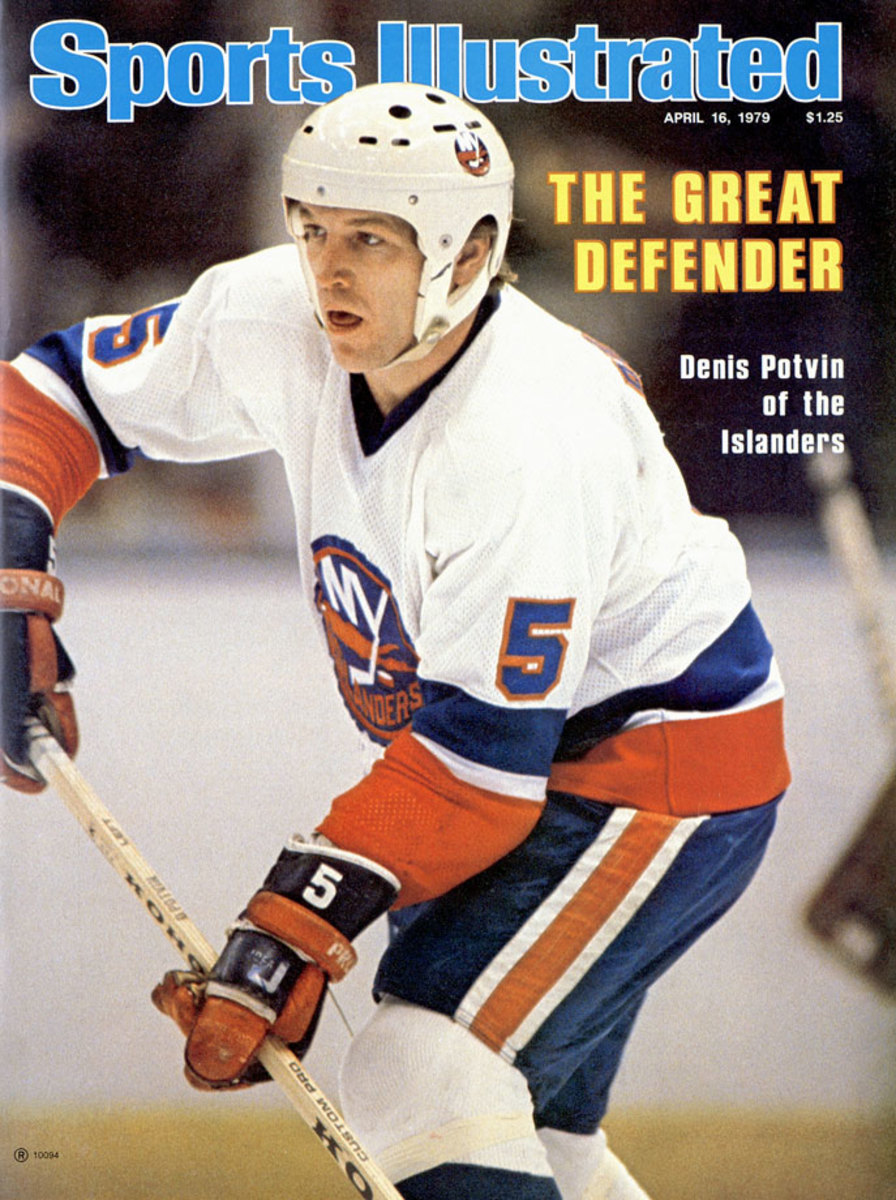
The 1974 Calder Trophy winner enjoyed his heyday as captain of the Islanders during their four consecutive Stanley Cups (1980-83). A three-time Norris winner, Potvin was an offensive force (310 goals; 1,052 points) and rugged bodychecker whose name still rings about the rafters of Madison Square Garden as fans of his crosstown rival Rangers invoke his memory with a vitriol reserved for few retired players in any building.
4. Nicklas Lidstrom
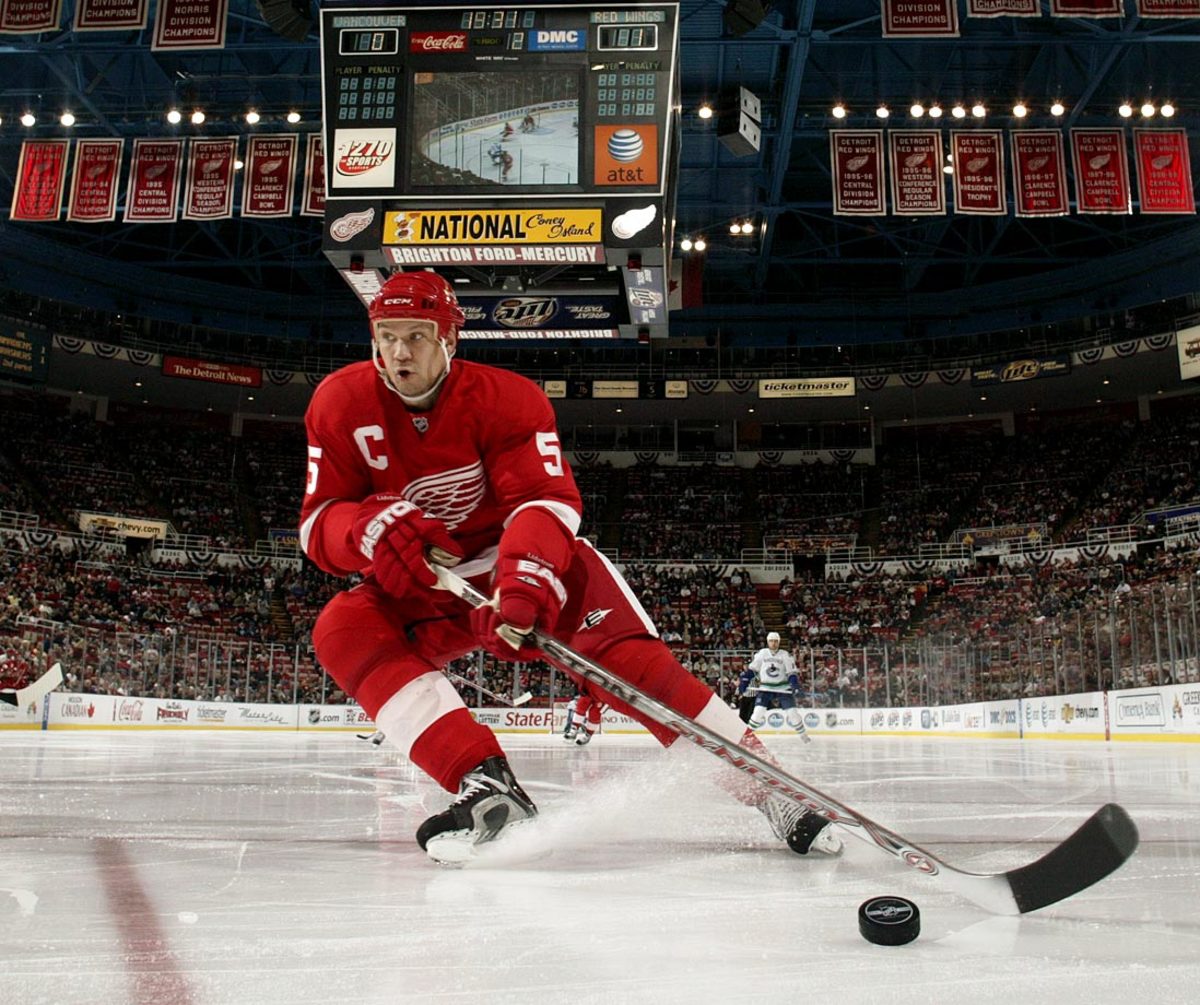
Lidstrom, a 2015 Hall of Famer, was called the perfect hockey player, a testament to his offensive wizardry, defensive subtlety, overall acumen and gentlemanly play. This four-time Stanley Cup winner with 1,142 career points and seven Norris Trophies was perhaps the least likely superstar to make a careless error or costly play. His Red Wings reached the playoffs each season of his 20-year career.
3. Doug Harvey
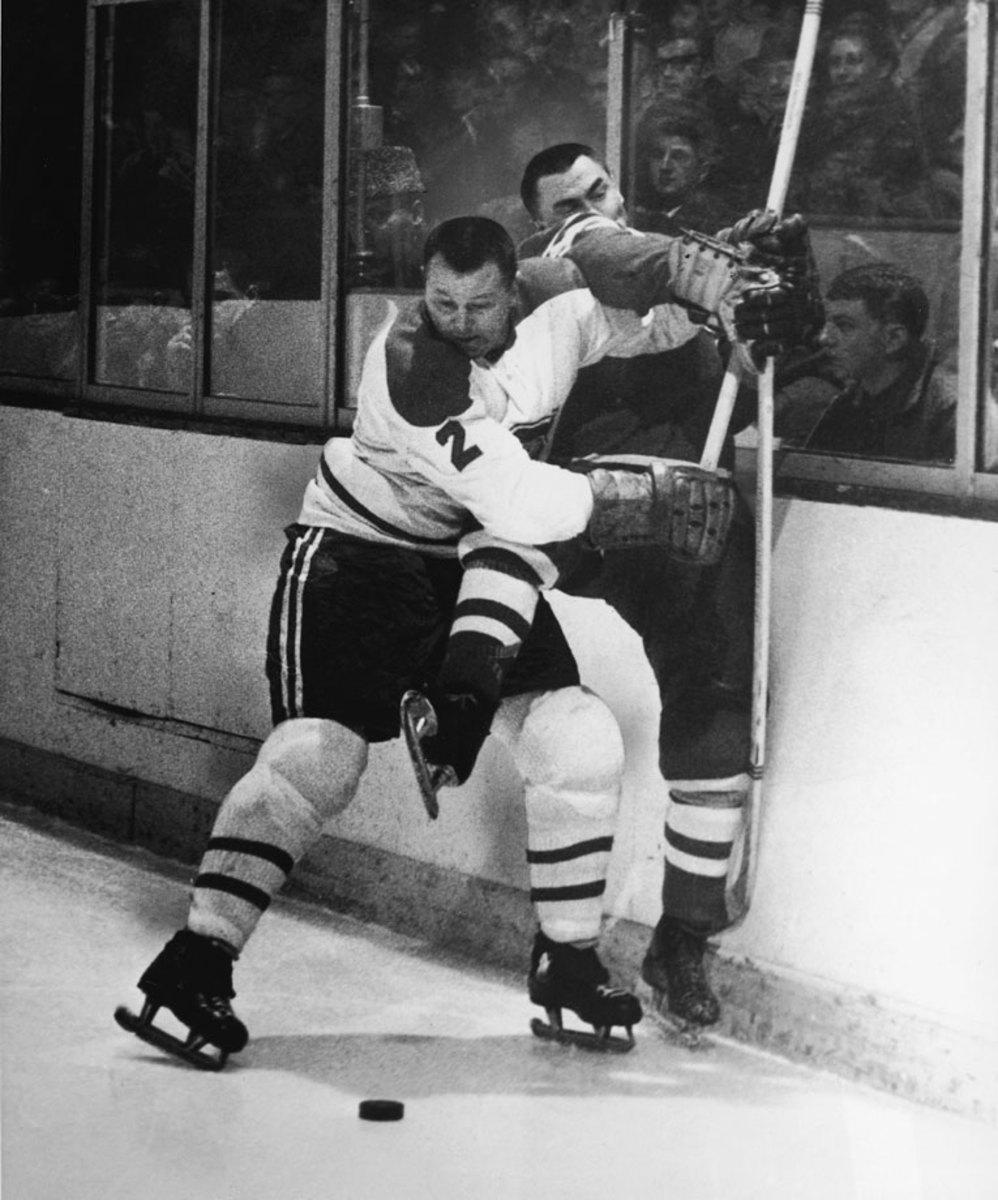
Described by the legendary Jean Believeau as the game’s greatest defenseman, Harvey was known for his superb skating and passing skills. He won the Norris Trophy seven times and was named to the NHL All-Star team 11 times. He was a key player for the Canadiens on six Stanley Cup championship teams, including their record five in a row (1956-60), before moving on to the Rangers when Montreal traded him in 1961 as punishment for helping to organize the players’ association.
2. Ray Bourque
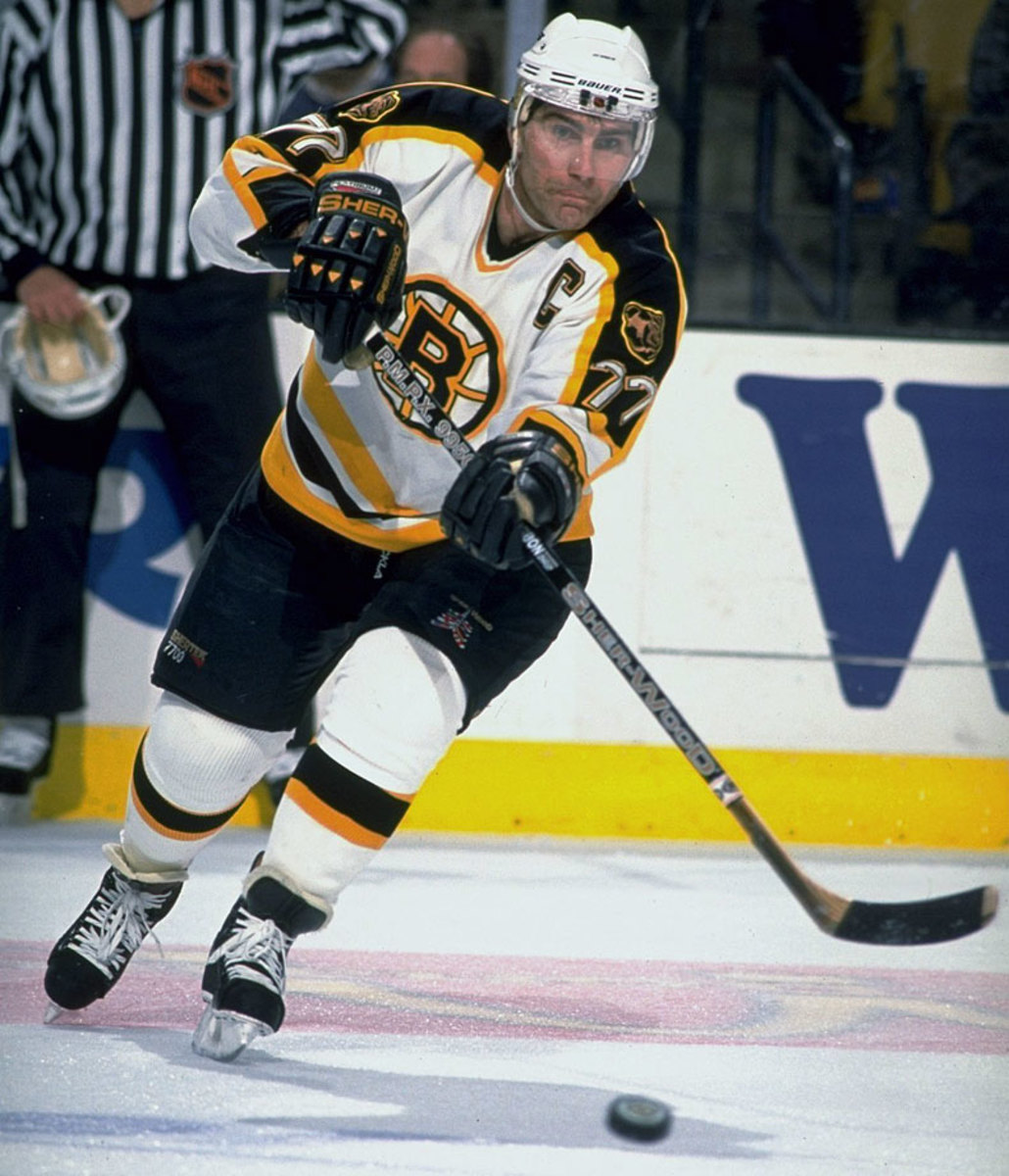
Few have played with the quiet leadership and integrity of Bourque, the all-time leader among defensemen in goals (410), assists (1,169) and points (1,579). After two trips to the Cup finals, 13 First-Team All-Star selections, and six Second-Team nods with Boston, he welcomed a trade to Colorado as a final chance to play for the title. Perhaps no player’s skate with the Stanley Cup met with as much joy as Bourque’s celebrating during his final game in 2001.
1. Bobby Orr
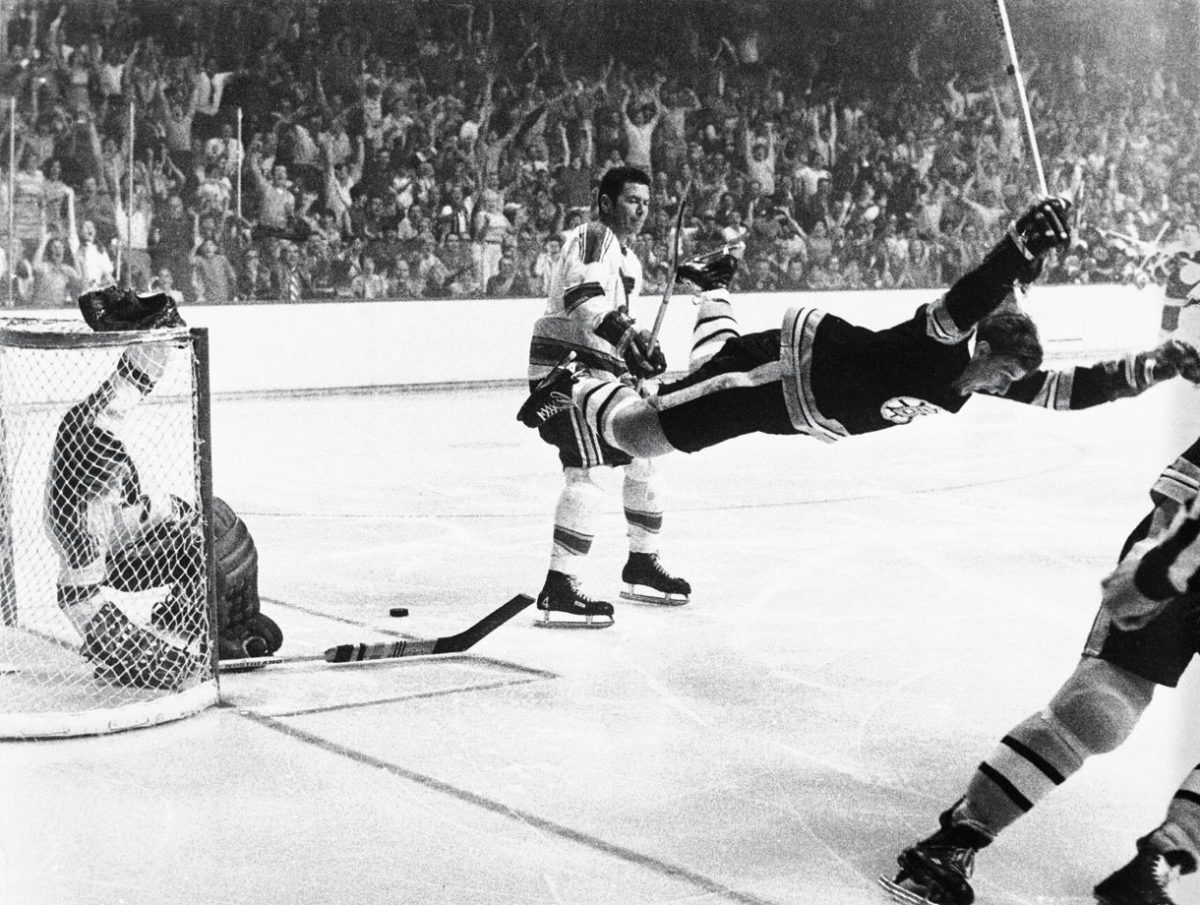
The legendary Bruin redefined what the position could do, joining rushes and sometimes creating them from his own end of the ice. Orr won eight straight Norris Trophies (1968- 75), three Harts and two scoring titles, an unheard of accomplishment for a defenseman. He led Boston, league also-rans before his arrival, to the Stanley Cup in 1970 and 1972, when he also won the Conn Smythe Trophy.
But behind the cascading beard that has inspired three parody Twitter accounts (not to mention a Burns Chia Pet giveaway at San Jose’s SAP Center), the top row of missing incisors and the tapestry of colorful tattoos—a look that confused four children into asking for his autograph at Disneyland, having mistaken him for an actual pirate of the Caribbean—hides one of the league’s best blueliners, a towering shot-generating machine and Norris Trophy finalist who did not reach these heights by accident.
It’s just that pigeon-holing him as hockey’s court jester would be to ignore all the substance underneath. Impressively mobile for his size and so versatile that San Jose coach Pete DeBoer compares him to a five-tool baseball player, Burns has been the catalyst for the Sharks, who averaged 2.89 goals per game this season and now lead the West with 3.43 in the playoffs. “You don’t see him being the last guy on the bike when everyone’s gone, or the first guy in there doing weird stretching,” says John Scott, a friend and former teammate in Minnesota and San Jose. “You just see this big goof with a beard who always has a smile on his face.”
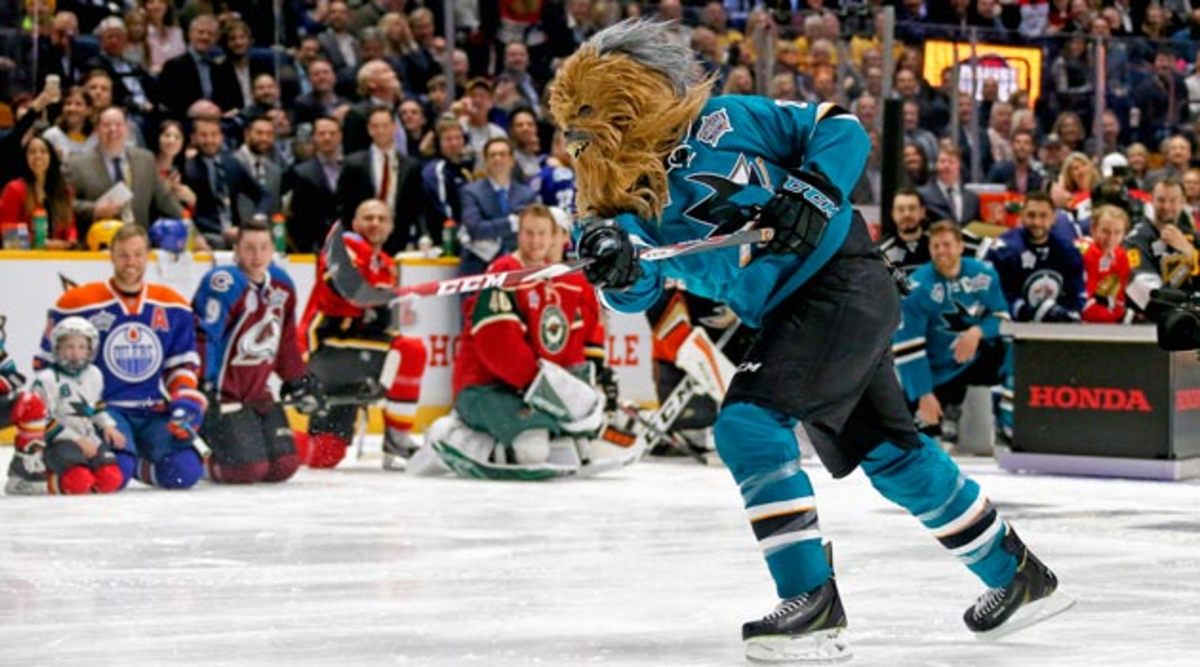
The most interesting man in the NHL lives on a spacious, stone-veneered property in the Willow Glen suburb of San Jose, roughly equidistant from the Sharks’ practice facility and their home rink. On this blue-skied Monday in late April, Burns returns home from practice to an empty house, with Susan at work and the kids—daughter Peyton, 6, and son Jagger, 4—at school. Barefoot and wearing sunglasses, he wanders out back and fires up the grill. “Oh, yeah,” Burns says, sparks flying from the charcoals. “We’re cooking now.”
Cool and collected, Jones letting Sharks find their game
Two days earlier the Sharks had polished off the Kings, the nemeses that had bounced them from the 2013 and ’14 Stanley Cup Playoffs, in five games in the Western Conference quarterfinals. Much of that knockout was owed to Burns, who led all defensemen in the first round with eight points, including five primary assists. He was strong on special teams, dropping to his right knee and hammering a puck past L.A. goalie Jonathan Quick on the power play in Game 4, and at even strength, too; in the 38-plus minutes that Burns skated five-on-five against fellow Norris finalist Drew Doughty, the Sharks out-attempted Los Angeles by 12.
Burns’s most critical contribution, though, came in Game 5, which ended the Kings’ streak of five straight victories over San Jose in elimination games. Less than four minutes into the final period, with the score knotted at 3, Burns joined forwards Joonas Donskoi and Melker Karlsson on the rush. This happens often: Burns developed an acute sense for offensive opportunities while playing right wing in Brampton and on-and-off for several seasons in Minnesota and San Jose. As Donskoi powered toward the net with Doughty draped over him, the winger centered the puck before wrapping around the net. Burns, unmanned in the slot, botched the initial backhanded shovel—“Oh, I whiffed,” he says later—but he made enough contact to find Donskoi back-door for the game-winner. Burns celebrated so hard that his helmet almost flew off.
“He’s very amazed by everything in the world,” says Scott. “Everything is just, Oh, my god.”
Burns’s skill and spirit have always operated in concert like this, because a beard alone does not make someone join Bobby Orr and Ray Bourque as the only defensemen to ever launch 350 shots in a single season. (Burns had 353 this season.) The jiu-jitsu uniform framed on his garage wall and the sparring gloves, autographed by MMA fighter Conor McGregor, inside his gym aren’t just for show; he studied martial arts in Minnesota and once picked up training tips from watching McGregor work out in Las Vegas. Teammates rib Burns about the massive camouflage backpack he lugs around everywhere, but it’s filled with equipment—fitness bands, yoga straps, a Nutribullet blender—that comes in handy on the road. Inside his home gym, statues of Buddha, Ganesh and two Chinese dragons lend a peaceful aesthetic to his cold tub, and his interest in Asian culture led Burns to research herbal teas, which he now sips to recover after games. When he and several Wild teammates started calling themselves the Shooting Squad, it was only because they hit the ice 40 minutes before practice to hone their releases; Burns’s deadliest shot isn’t the booming one-timer expected of skaters his size but rather a quick-trigger snap shot that he can uncork from a standstill at the blue line. Wonder what was gained from biking 30 miles a day over gravel and rumble strips last summer? Look to the 25:52 in ice time Burns averaged during the regular season, seventh most in the league, and the 82 games he played for the second straight year.
Joonas Donskoi becoming Sharks' not-so-secret weapon
“It’s not just a case of a guy having a lot of money and trying to find ways to spend it,” says Doug Risebrough, the GM who drafted Burns. “These are passions. They’re not normal passions, but they’re passions. And there’s detail to them. It’s not just a like. It’s a study, so to speak.”
Consider Burns’s best-known pursuit outside hockey, which has actually taken a back seat in recent years. Aside from his 8-year-old Siberian huskies, Maia and Zeus, lounging near the grill, there are no animals here. When the Wild traded him at the 2011 draft, he gifted Barczyk his menagerie before moving out west, pre-empting the concerns of his San Jose neighbors, one of whom wondered if Burns was “that guy with 500 snakes.” But for a time in Minnesota, caring for his snakes helped Burns decompress after hockey. If he couldn’t sleep, he’d walk downstairs and clean cages.
Borrowing methods from Barczyk, he kept meticulous notes of weights, feeding times and “whether they went to the bathroom.” Breeding snakes was his favorite part, which perhaps explains why his collection grew so large—more than 300 by the end. “Getting the eggs out, getting the incubator ready, then having all the babies, definitely amazing,” he says. In particular, Burns enjoyed cross-matching snakes to create new skin patterns, researching alleles and learning about genetic probabilities.
Indeed, much of snake breeding is left to chance. Often the creature that gnaws through the leathery egg will be predictable, familiar. But sometimes you get lucky. Burns did when he crossbred a Spider Special ball python with a Mojave, hatching three peach-colored beauties with a webbed design called Crystal Spiders. “He was the second or third person to ever produce this mutation of snakes,” Barczyk says. “It was pretty mammoth at the time.” And it is then that all those hours, days, months, years of preparation and work become worth it, because it allowed something so unique to enter the world.
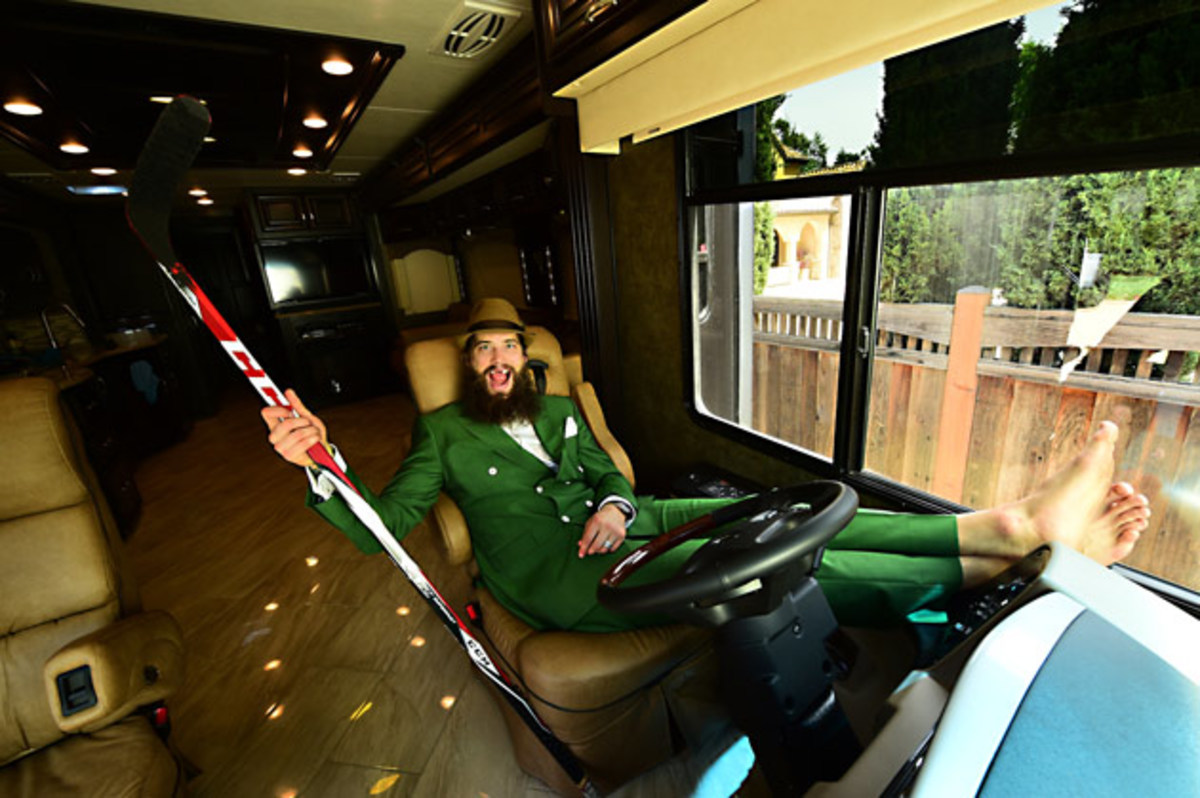
Later that afternoon, once the charcoals die out, the kids burst through the front door in a torrent of energy, wrestling their dad to the ground. Burns wraps Jagger in a leg-lock and tickles his belly. Peyton sneaks from behind and hugs him around the neck. “Giddyap horsie!” she says, making him tap out. Then the Burnses head into the driveway to show off their new vacation home.
Why the San Jose Sharks should be Canada's playoff team
For two years Burns researched chassis and floor plans before buying this 441⁄2-foot RV. Unlike the old van, it has an actual shower, a comfier bed and a television built into the exterior. He already looks forward to watching it while doing lunges in a parking lot of a Walmart somewhere. The Burnses have already planned to spend most of this summer back on the road, following the same blank itinerary. “It’ll be fun living in this thing, driving up and down the highways, see something and you stop,” Susan says, sitting on one of the RV’s two couches.
For now, Burns’s life contains enough excitement. Last week, the Sharks took a 2–0 series lead in the Western Conference semifinals, outscoring Nashville 7–3 in third periods and making their first Stanley Cup seem more attainable each day. Off-season signees forward Joel Ward (21 goals and 22 assists during the regular season) and defenseman Paul Martin, Burns’s pass-happy partner, have fit in seamlessly. Joe Thornton finished tied for fourth in the NHL in points (82) and second in assists (63). Burns is also quick to credit DeBoer, an assistant on Team Canada’s gold medal worlds team last summer, and a renovated practice facility for fostering “really, really great energy.” Says Burns, “Definitely the most fun I’ve had playing hockey.”
Those around him can tell. How’s the ZFL today? Burns’s agent will text, referring to what he calls his client’s Zest for Life. Off the charts, Burns will reply. “I love being around him,” Sharks GM Doug Wilson says. “He’s vibrant. The curiosity, that’s how you should live life.” Before long another entrance ramp will beckon, another adventure will call his name. So treasure this elite defenseman, this goofy donkey while he’s still around, because there may never be another quite like him.
